Your Ultimate Guide to Ghana Braids: Cost, Care, and Getting It Right
I’ve been around the world of braiding for what feels like a lifetime. I learned the old-school way, watching the masters in my family transform hair with nothing but their hands, a comb, and a bit of grease. They taught me that braiding is more than just a hairstyle; it’s a form of protection and a deep-rooted tradition. After years of professional work and running my own salon, I’ve seen it all—and trust me, a stunning set of Ghana braids begins long before you even sit in the chair.
In this article
- So, What’s the Difference Between Braid Styles?
- The Foundation: Prepping Your Hair for Success
- In the Salon Chair: How the Magic Happens
- Keeping Your Braids Fresh: Long-Term Care
- Handling Mid-Style Hiccups
- Knowing When to Let Go
- The Takedown: Be Patient!
- Final Thoughts: Finding a Pro and Staying Safe
- Inspiration Gallery
Ghana braids are pure elegance. You might hear them called Cherokee braids, banana braids, or just straight-backs, but the technique is what sets them apart. They’re a type of feed-in cornrow, which means the braid starts out tiny with your own hair, and then the stylist gradually adds small pieces of synthetic hair. This creates that seamless, natural-looking taper that lays beautifully flat against the scalp. It’s an amazing protective style, but only if it’s done correctly. A bad job can lead to headaches, scalp damage, and even hair loss. My goal is to give you the inside scoop so you can rock this style safely and beautifully.
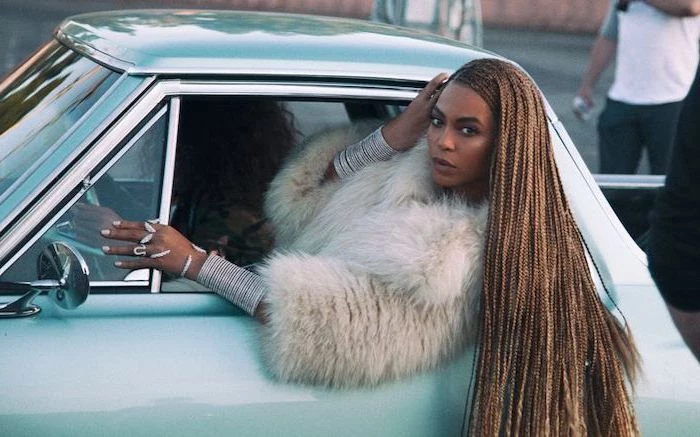
So, What’s the Difference Between Braid Styles?
People throw around a lot of terms, and it can get confusing! Knowing the lingo helps you ask for exactly what you want and understand why one style might be better for your hair than another. To a pro, these distinctions are everything.
The main thing to know is that Ghana Braids are all about the “feed-in” technique. We start braiding with just your natural hair for the first few stitches. Then, we discreetly feed in small pieces of extension hair, adding more as we go down the braid. This method avoids that chunky, heavy knot right at your hairline, which can pull on your delicate edges. It’s a game-changer for comfort and hair health.
Now, Traditional Cornrows are a bit different. They’re often done using only natural hair and are typically smaller, sometimes serving as a base for wigs. If extensions are used, they’re often added right from the very beginning, which creates that knot at the root I mentioned. While it can be a solid style, it puts more focused tension on the scalp.
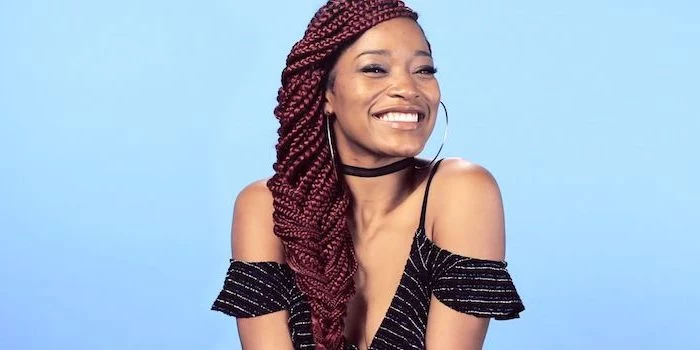
And then you have Box Braids. The key difference here is the parting. Your scalp is sectioned into squares (the “boxes”), and each braid hangs individually instead of being attached to the scalp like a cornrow. They aren’t plaited along the scalp at all. While you can get “knotless” box braids that use a similar feed-in method to reduce tension, the fundamental style of free-hanging braids is completely different.
The Foundation: Prepping Your Hair for Success
You can’t build a strong house on a shaky foundation, right? The same goes for your hair. The prep work you do determines how long your braids will last and how healthy your hair will be when they come out. This is a non-negotiable first step.
Before we even talk about braiding, let’s talk about shopping. Here’s a quick list of what you’ll need:
- Braiding Hair: You’ll typically need 5 to 8 packs of pre-stretched Kanekalon hair. Brands like X-Pression or Spectra are salon favorites. Expect to spend between $20 and $40 total for the hair.
- Clarifying Shampoo: A must-have for getting rid of buildup. A good one costs about $5 to $15.
- Deep Conditioner: Essential for moisture and strength. Budget around $8 to $20 for a quality treatment.
- The Extras: A rat-tail comb for parting, a satin bonnet or scarf for sleeping ($5-$15), and a spray bottle ($2) will be your best friends.
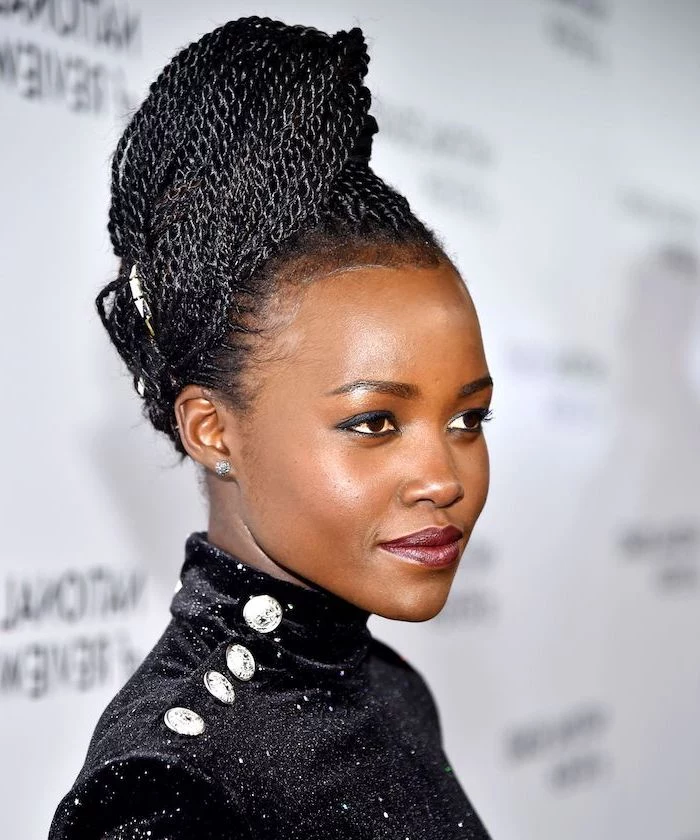
Step 1: Get It Squeaky Clean
You have to start with a clean slate. A good clarifying shampoo will strip away all the product buildup and oils from your hair and scalp. I usually tell my clients to do this a day or two before their appointment; washing the same day can sometimes make the scalp a little too sensitive. Focus the shampoo on your scalp and let the suds just run down the length of your hair to avoid unnecessary tangling.
Step 2: Deep Condition Like You Mean It
After clarifying, your hair will be thirsty for moisture. This is where a deep conditioner comes in to save the day. Look for one with a good balance of moisturizing ingredients (like aloe or glycerin) and a little protein (like keratin) to strengthen the hair. Slather it on, pop on a plastic cap, and let it sit for at least 30 minutes. The heat from your head will help it penetrate deep into the hair shaft. Your hair is about to be tucked away for weeks, so this step is vital.
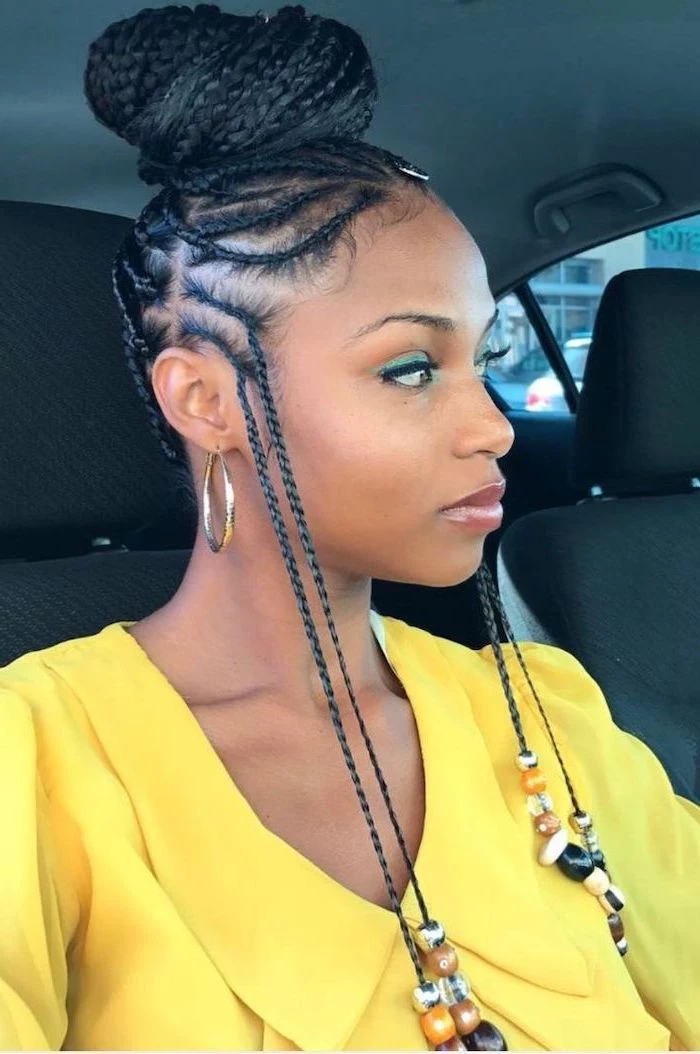
Step 3: Stretch It Out
This is the pro secret that makes a world of difference. Braiding on shrunken, tightly coiled hair is a recipe for tangles and uneven parts. Stretching the hair first makes the whole process smoother and faster. The easiest way is a low-heat blow-dry using the tension method: hold a section of hair taut and run the blow dryer with a nozzle up and down the shaft. If you’re strictly no-heat, you can do banding or threading overnight on damp hair to stretch it out naturally.
In the Salon Chair: How the Magic Happens
Once your hair is prepped, it’s time for the artful part. From picking the right hair to getting the tension just right, every detail counts. By the way, be prepared to be in the chair for a while—a typical Ghana braid installation can take anywhere from 4 to 8 hours, depending on the size and complexity. Plan accordingly!
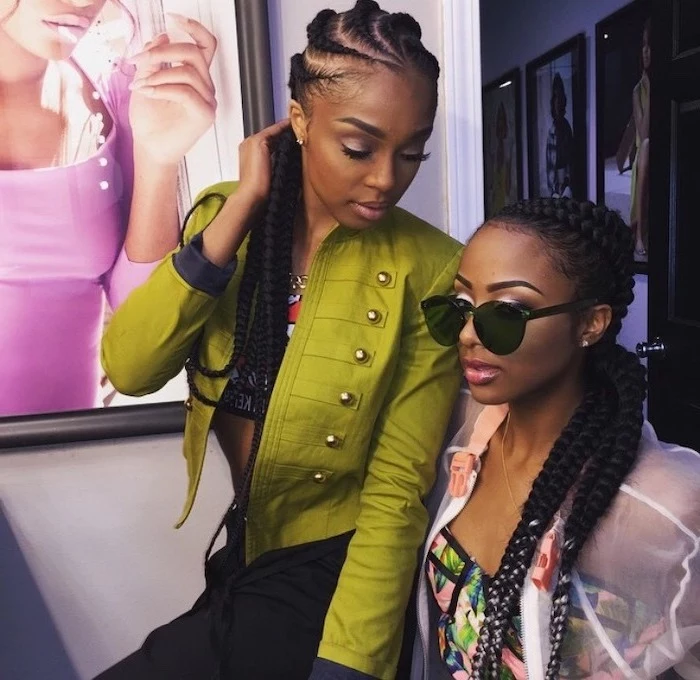
Choosing the Hair: As I mentioned, pre-stretched Kanekalon hair is the industry standard. It’s lightweight, gives a natural tapered look, and seals perfectly with hot water. Oh yeah, a heads-up on allergies! Some people have a sensitivity to the coating on synthetic hair. If you have sensitive skin, this is a non-negotiable step: soak the hair in a mix of 1 part apple cider vinegar to 3 parts warm water for about 30 minutes. Rinse it well and let it air-dry completely before your appointment. This simple trick can save you weeks of an itchy scalp.
The Art of Parting: Clean parts are the signature of a professional job. Whether you want classic straight-backs or a cool zig-zag design, the parts need to be crisp. I always use a rat-tail comb for this. More importantly, the sections shouldn’t be too small. A tiny sliver of natural hair can’t support a thick, heavy braid without causing breakage. This is a common mistake that leads to damage.

Tension is Everything: This is the most critical skill for a braider. The braids need to be snug enough to look neat and last, but NEVER so tight that they cause pain. I call it “healthy tension.” Seriously, pain is NOT a sign of a good braid job. If your head is throbbing or you see little red bumps around the follicles, they are too tight. A good stylist knows how to grip the root without pulling on your scalp. I always check in with my clients as I go. Don’t be afraid to speak up!
A quick tip for those with fine hair or tender edges: ask your stylist for slightly larger parts. This helps distribute the weight of the extension hair more evenly and puts far less stress on your follicles.
Keeping Your Braids Fresh: Long-Term Care
Getting the braids installed is just the beginning. How you care for them over the next month or two determines how they look and the health of your hair underneath.
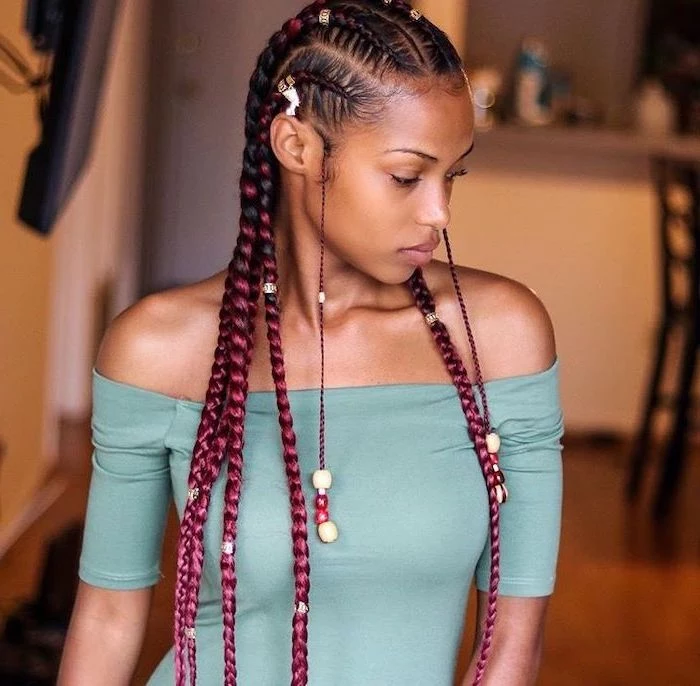
First, you absolutely must protect your hair at night. Sleep in a satin bonnet or scarf, or use a satin pillowcase. Cotton soaks up moisture and causes friction, leading to frizz and breakage. This is non-negotiable!
To keep your scalp happy, you can do a light cleanse every two weeks or so. Mix a little sulfate-free shampoo with water in an applicator bottle, apply it directly to your parts, and gently massage with the pads of your fingers. Rinse carefully. For daily moisture, a light spritz is perfect. You can buy one, or make your own! In a spray bottle, mix about 1 cup of distilled water, 1 tablespoon of your favorite leave-in conditioner, and a few drops of a light oil like jojoba or grapeseed. Avoid heavy greases that just sit on top and cause buildup.
Handling Mid-Style Hiccups
Even with perfect care, a few things can pop up. Here’s how to handle them.
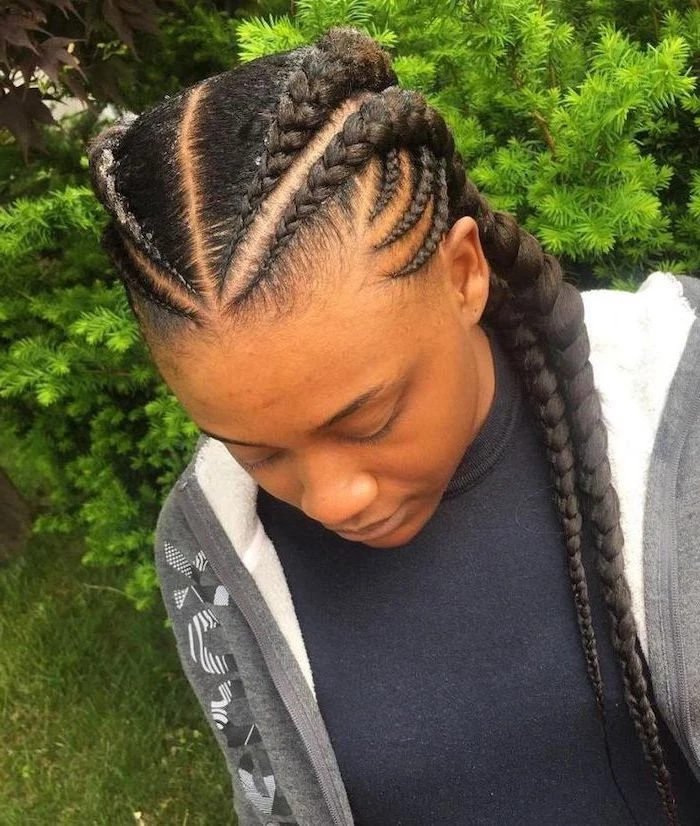
- Frizz Happens: If you start seeing flyaways after a couple of weeks, don’t panic. Smooth a little bit of mousse over the braids and tie them down with a satin scarf for about 30 minutes. It works like a charm to tame the frizz.
- Persistent Itch: If your scalp is still itchy after the first few days, it might be product buildup. Try the scalp cleanse I mentioned above. If it’s really persistent, you might be having a reaction to the hair itself, and it may be time to take them down.
Knowing When to Let Go
Protective styles are temporary! I strongly recommend keeping Ghana braids in for four to six weeks. Eight weeks is the absolute maximum. After that, your new growth can start to tangle and mat at the base of the braid, which can cause serious breakage during takedown. Listen to your hair—if it feels off, it’s time for them to go.
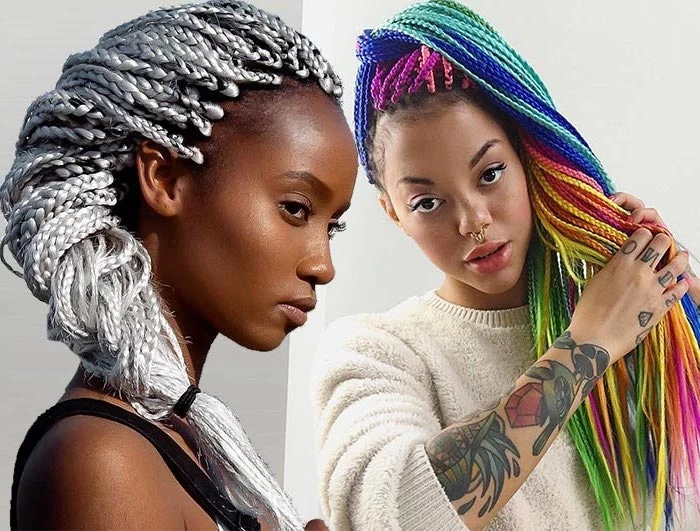
The Takedown: Be Patient!
How you remove your braids is just as important as the installation. Rushing this can ruin all the hair growth and protection you just achieved. Okay, deep breath. Set aside a good 2 to 4 hours for this. Put on a movie, grab a snack—patience is your best friend here.
Start by snipping the ends of the braids, making sure to cut well below where your own hair ends. Then, gently unravel each braid. When you get a section of your natural hair free, don’t just move on! Gently detangle it with your fingers first. You’ll see a small ball of shed hair—this is totally normal. It’s just the hair that naturally sheds every day but was trapped in the braid. Once you’ve finger-detangled, you can follow up with a wide-tooth comb from the ends to the root.
After all the braids are out, your hair deserves some serious love. A pre-shampoo treatment with warm oil is a great way to soften any lingering buildup, followed by that same clarifying and deep-conditioning routine you started with.
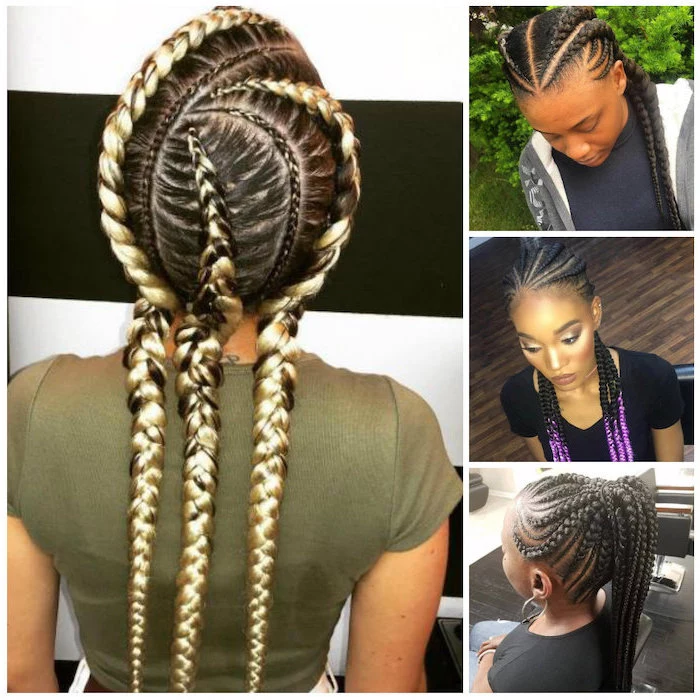
Final Thoughts: Finding a Pro and Staying Safe
Let’s talk about the hard truths. While it’s tempting to find the cheapest option, a quality installation is an investment in your hair’s health. Expect to pay anywhere from $150 to over $300, depending on your location and the stylist’s experience. A professional can see your whole head, create clean parts, and manage tension in a way that’s nearly impossible to do on yourself.
If you feel immediate pain, see bumps or sores, or can visibly see your scalp being pulled, the braids are too tight. Take them out immediately. It’s not worth risking traction alopecia, which can be permanent hair loss.
When done with care and skill, Ghana braids are one of the most beautiful and timeless styles you can wear. It’s a look that carries a rich history and offers both beauty and protection. Treat your hair right, and it will thank you for it.
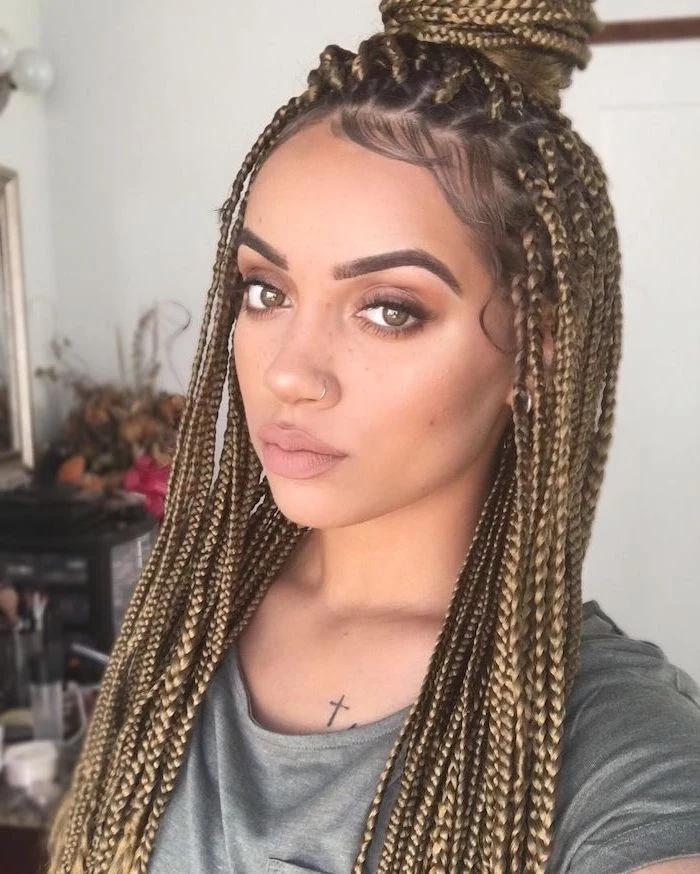
Inspiration Gallery
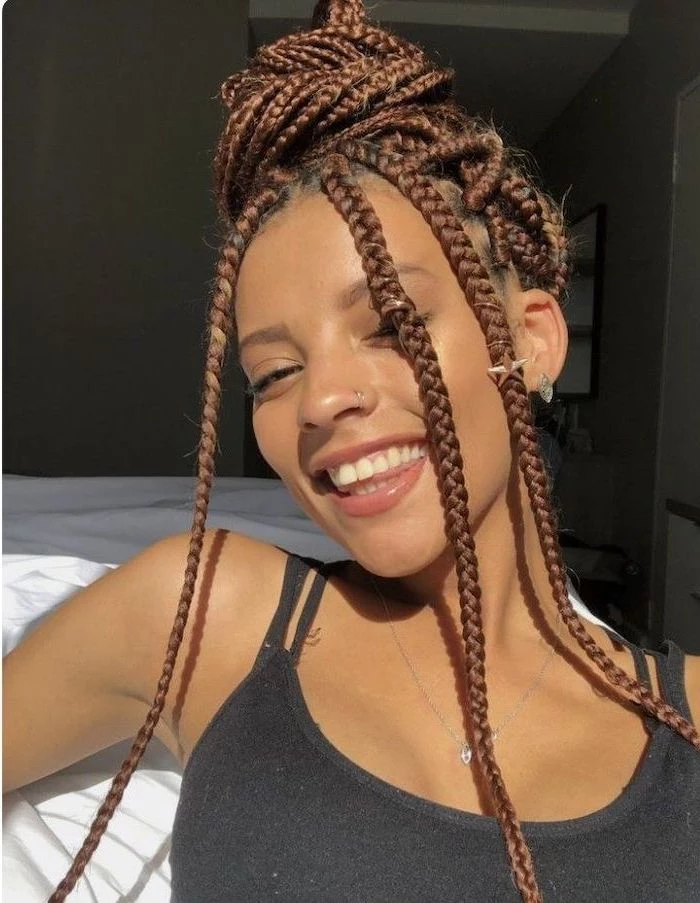
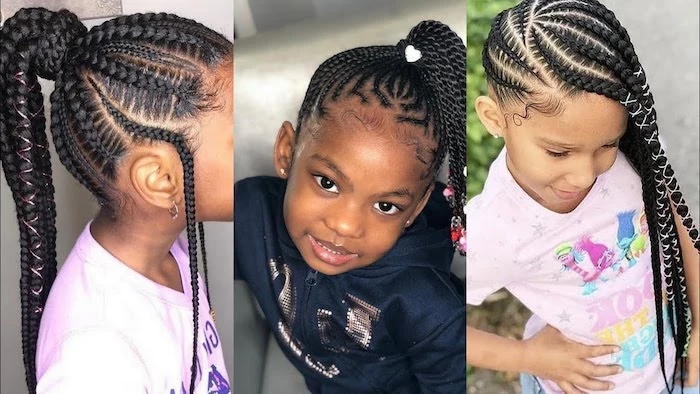
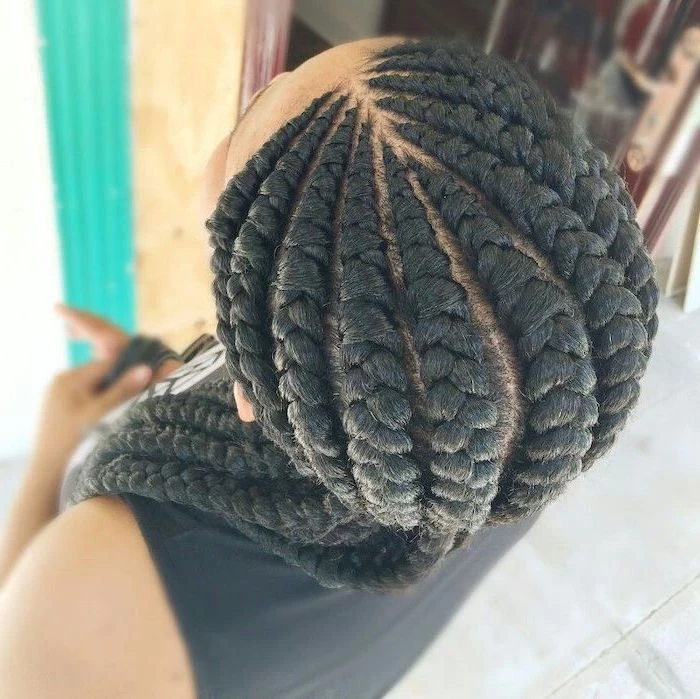
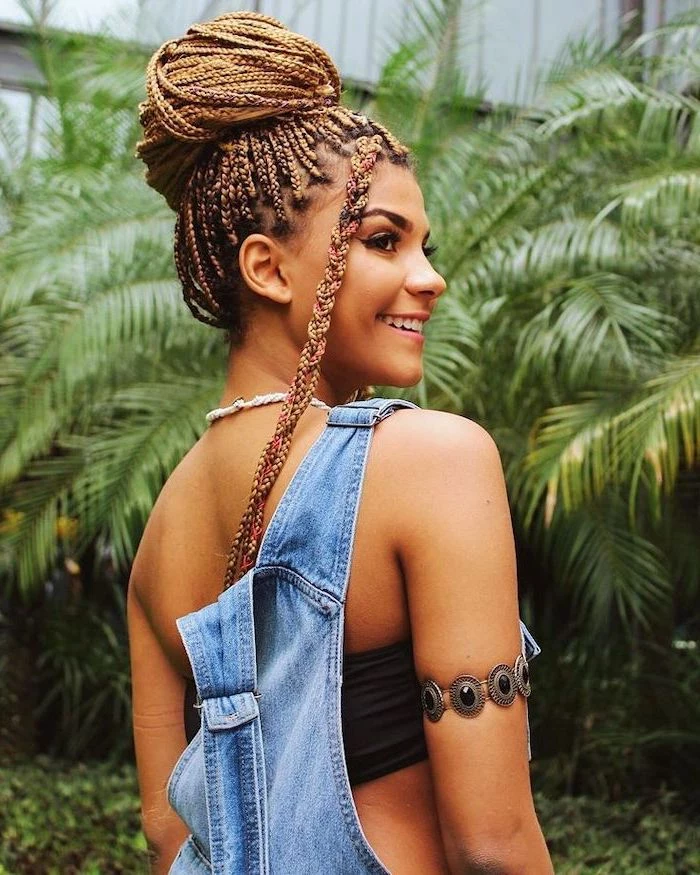
The Pre-Braid Prep: Your appointment’s booked, but the work starts now. For the best results, ensure your hair is thoroughly washed, detangled, and deep-conditioned a day or two before. Arriving with clean, product-free, and stretched (or blow-dried) hair allows your stylist to work faster and create neater, more uniform parts, which is the foundation of a flawless Ghana braid set.
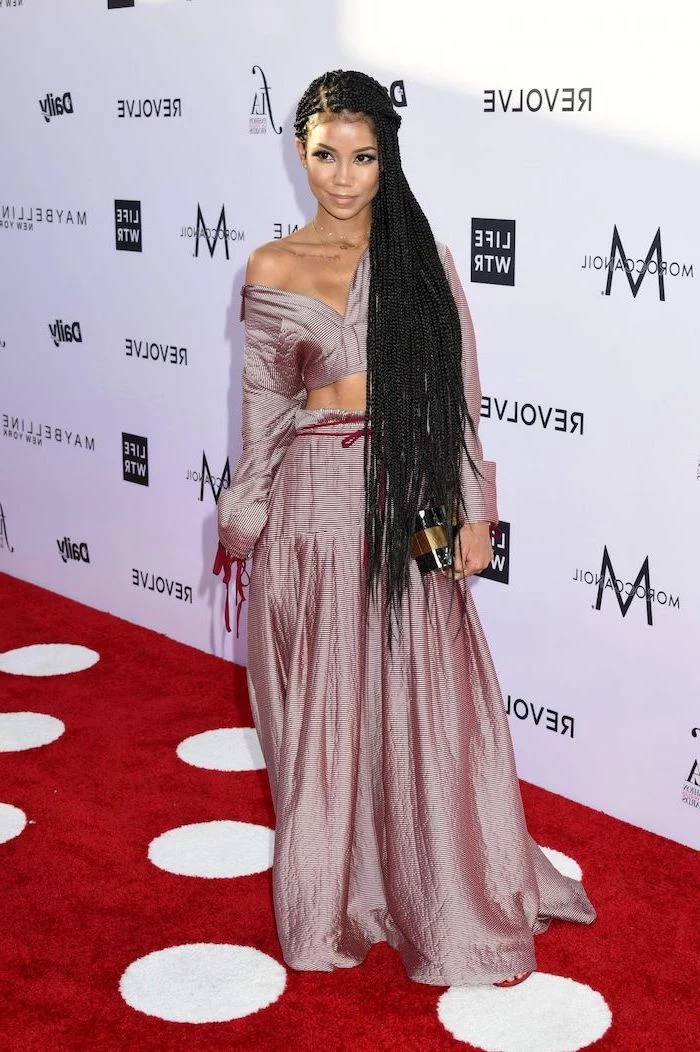
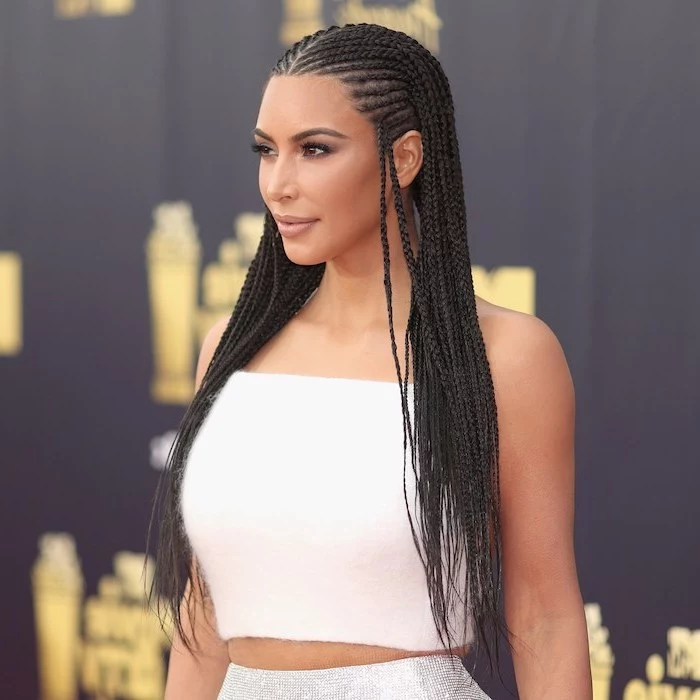
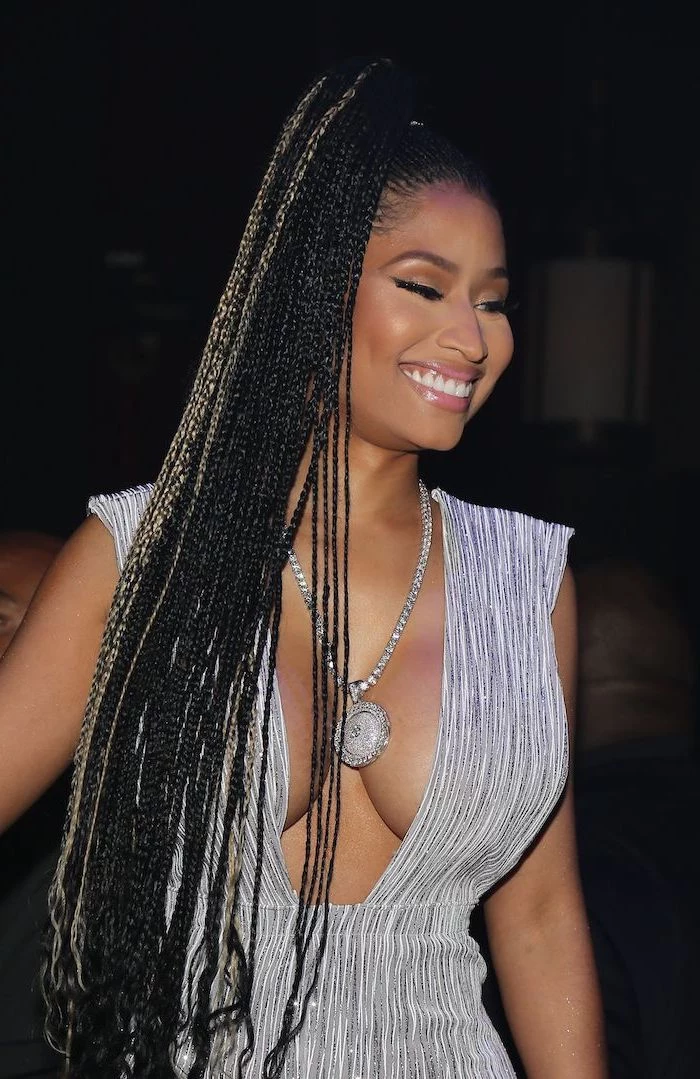
- Reduced frizz and flyaways.
- A longer-lasting, sleek finish.
- Less manipulation and breakage during the braiding process.
The secret? A light application of a non-flaking gel like Shine ‘n Jam Magic Fingers or a styling mousse right before your stylist begins braiding each section.
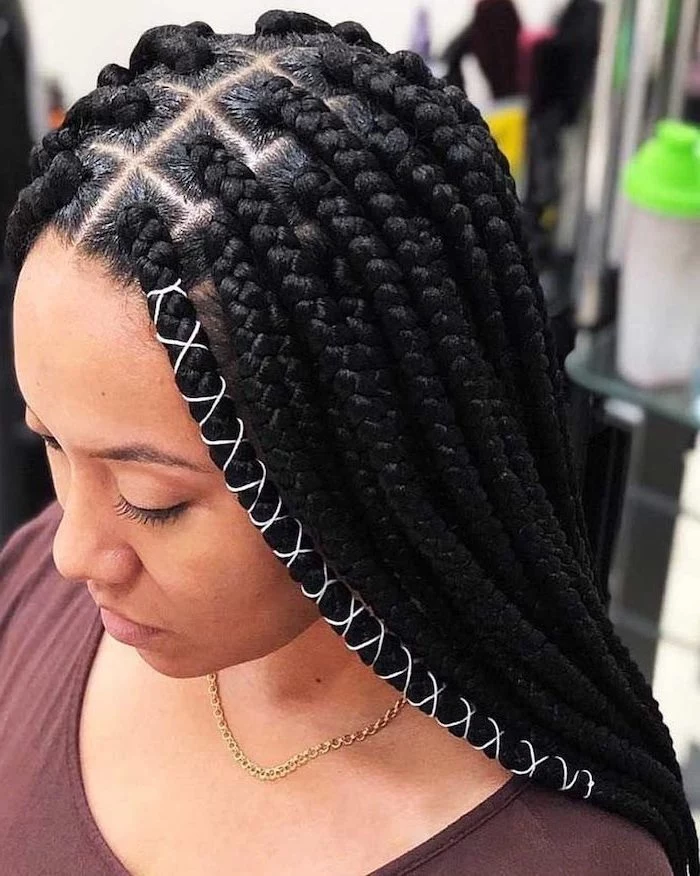
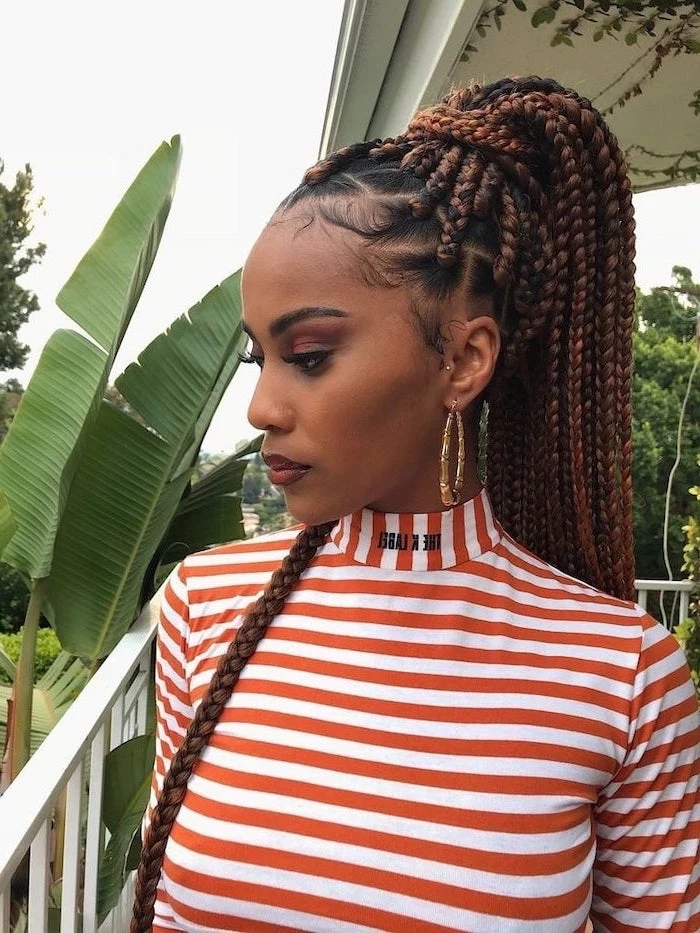
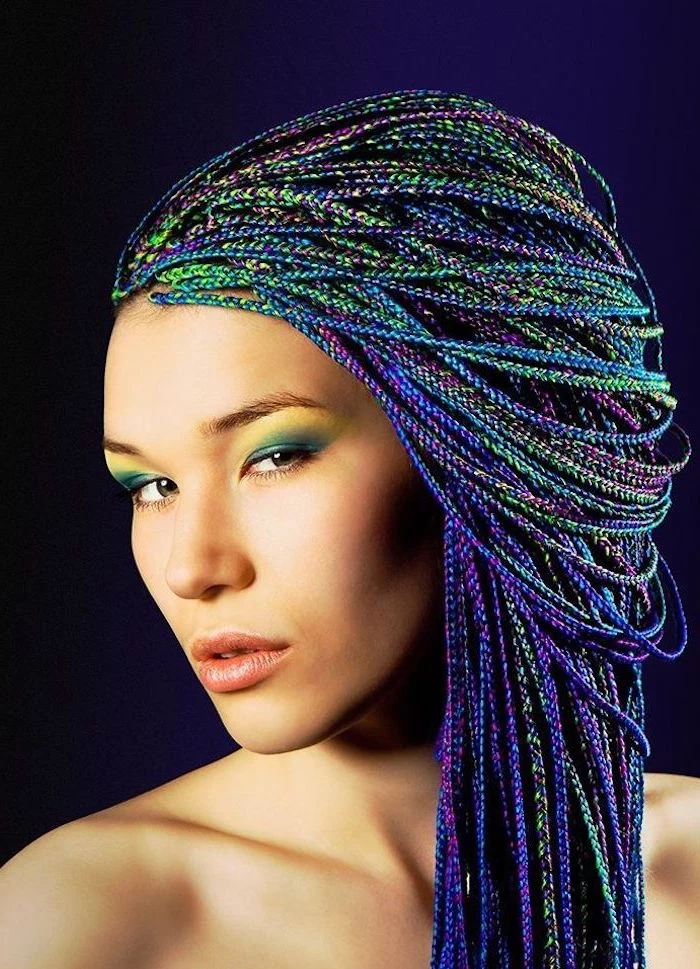
Can I work out with my Ghana braids?
Absolutely! That’s one of their benefits. After a workout, gently pat your scalp with a cloth dampened with witch hazel or a specialised product like Cantu’s Apple Cider Vinegar Root Relief to cleanse sweat and buildup without disturbing the style. Follow up with a light spritz of a leave-in conditioner to restore moisture.
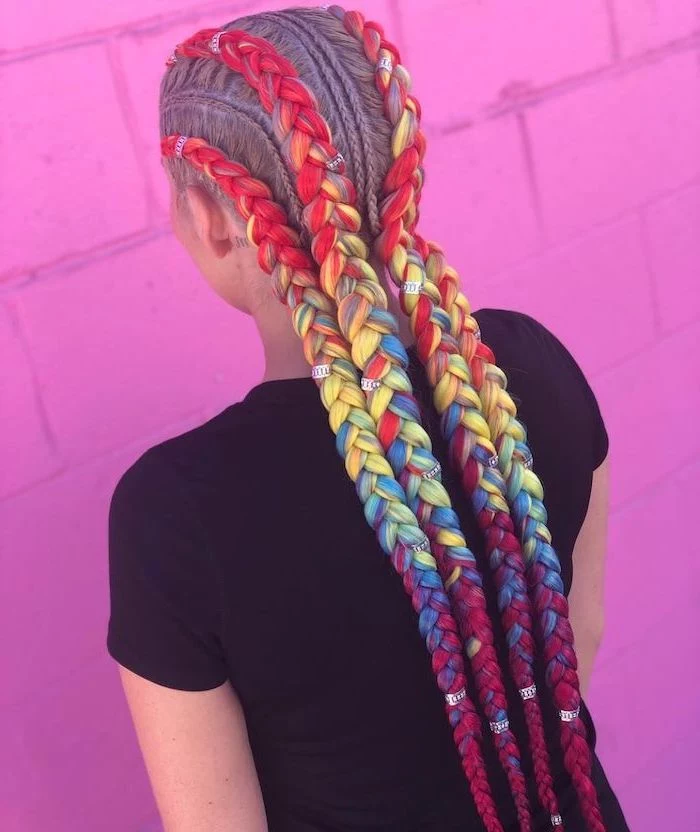
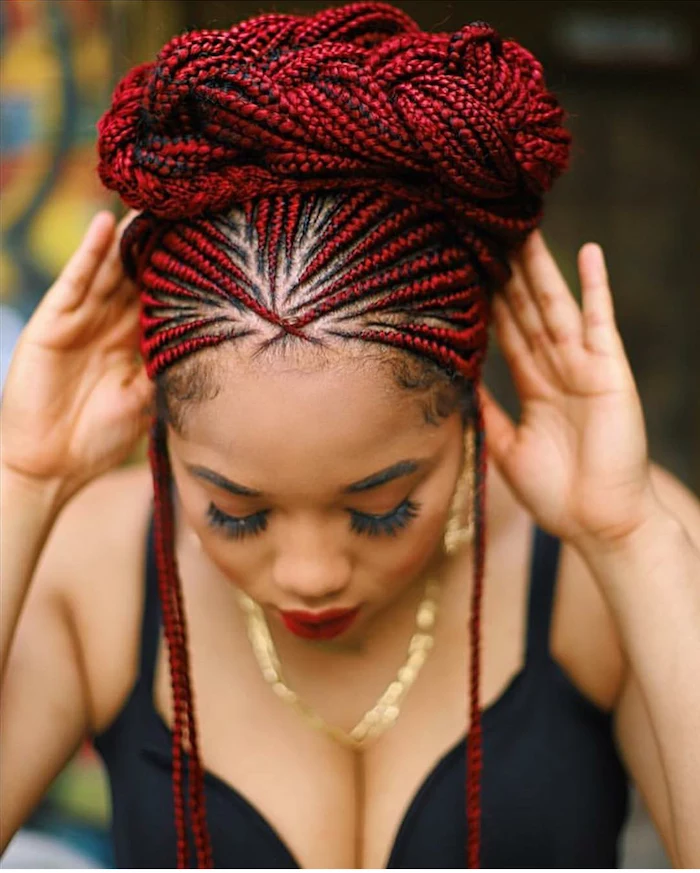
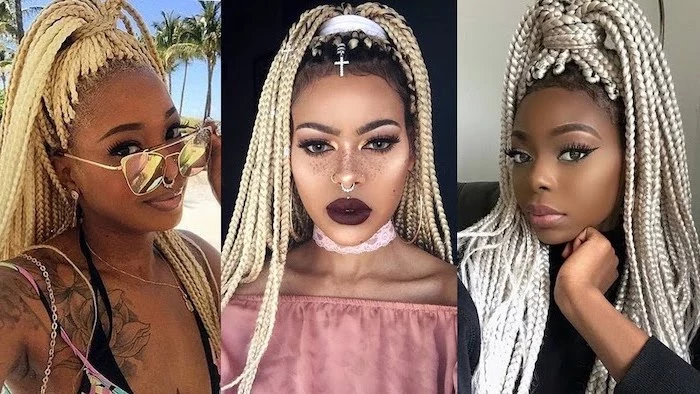
An estimated 1 in 3 women of African descent experience traction alopecia, a form of hair loss caused by prolonged or repeated tension on the hair root.
This is why the feed-in method of Ghana braids is so crucial. By starting with natural hair and gradually adding extensions, the tension is distributed more evenly, significantly reducing the risk of damage to your delicate hairline compared to styles that add a large knot of hair at the root.
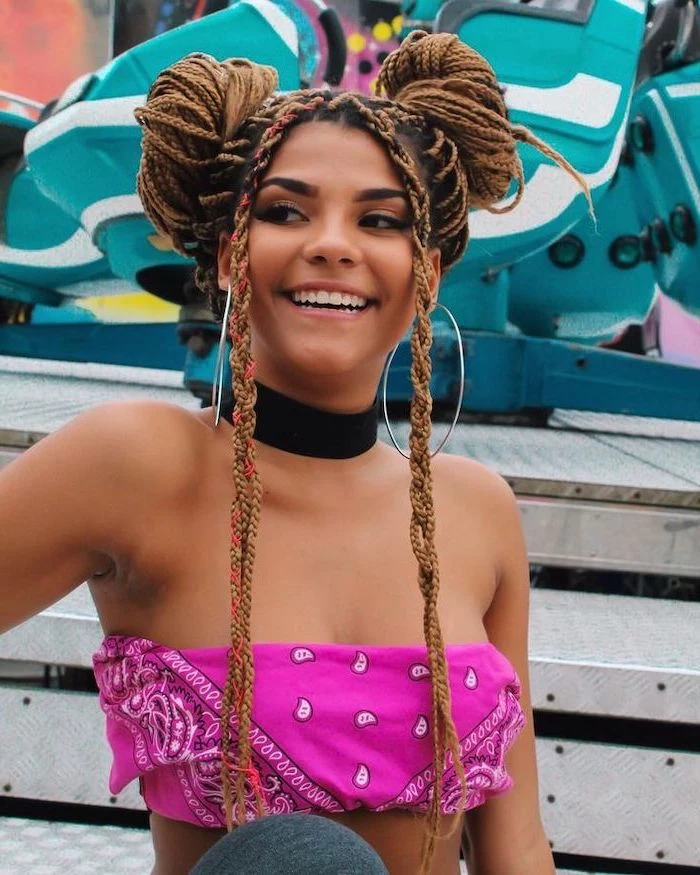

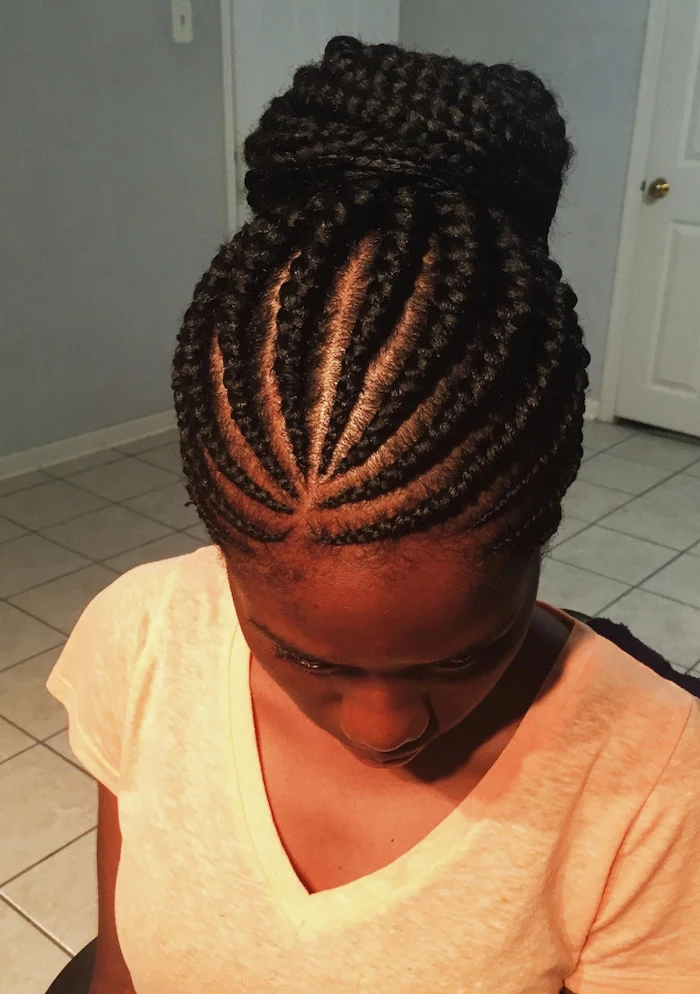
X-Pression Hair: Favoured by most professional braiders, this Kanekalon fibre is lightweight, comes in longer lengths, and can be set with hot water for sealed, non-scratchy ends. It’s known for its soft texture and less tangling during installation.
Standard Kanekalon: More widely available and often cheaper, but can be heavier and have a coarser texture. It’s a solid choice, but for long or jumbo braids, the weight difference of X-Pression is noticeable.
For ultimate comfort and a premium feel, requesting pre-stretched X-Pression hair is the gold standard.
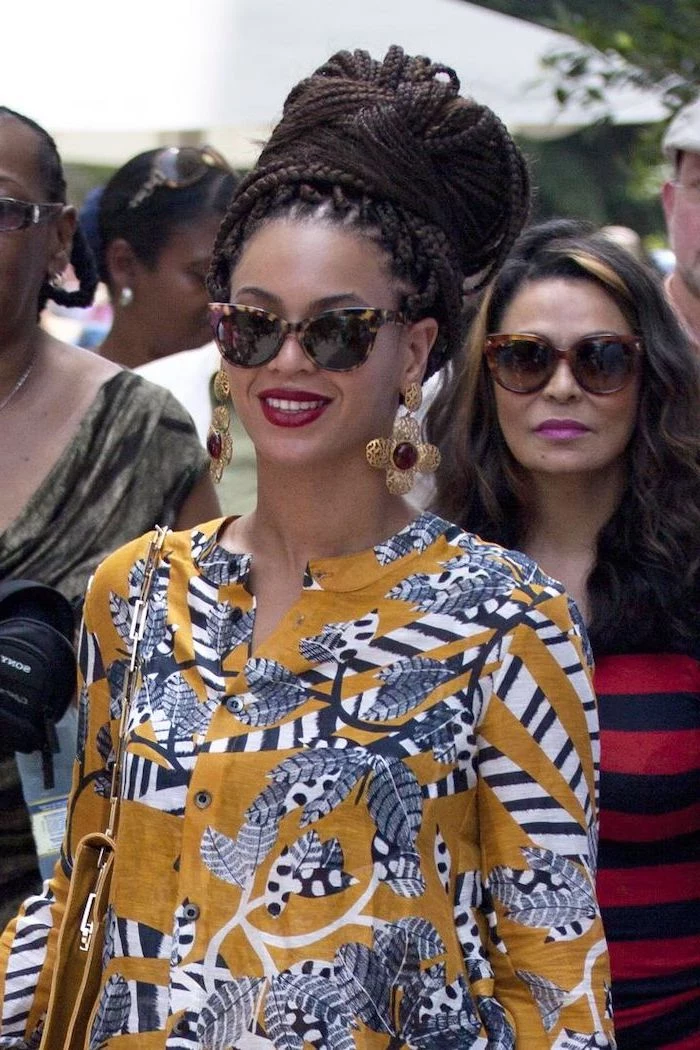
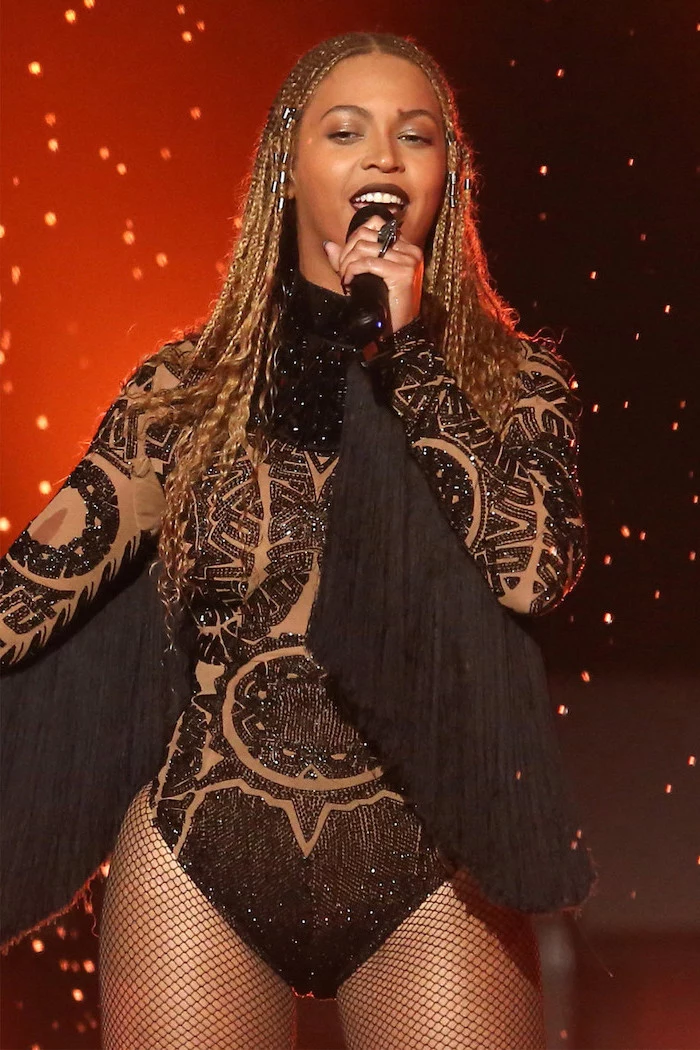
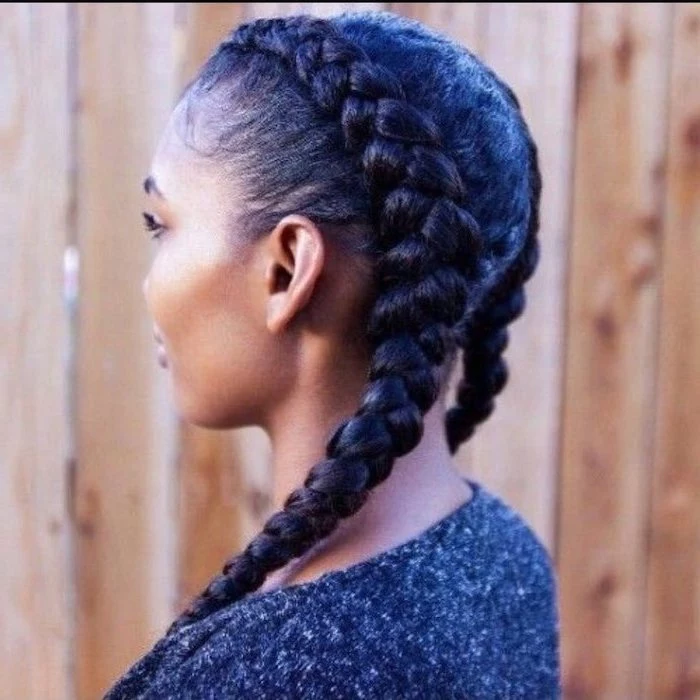
The parting grid is an art form in itself. While classic straight-back parts are timeless, don’t be afraid to request creative patterns. Curvy parts, zig-zags, or a mix of triangular and boxy sections at the crown can elevate your braids from a simple protective style to a true statement piece.
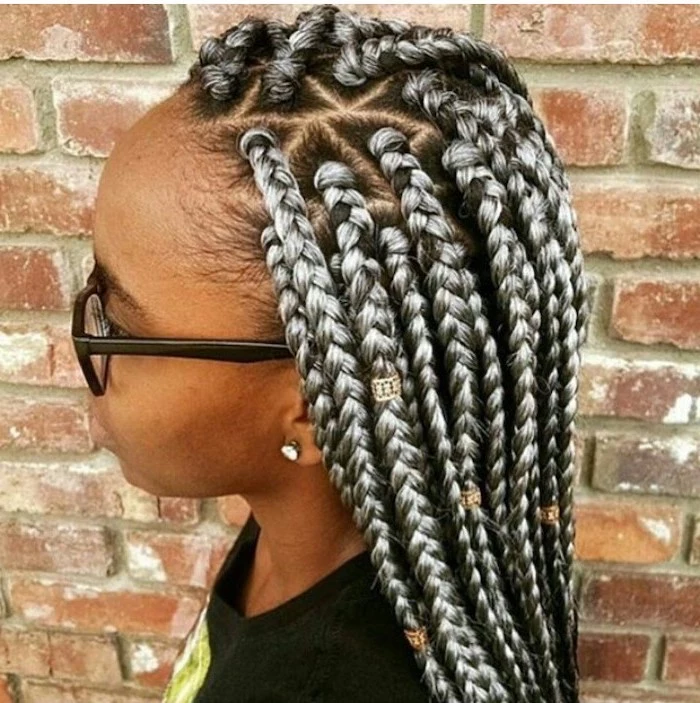
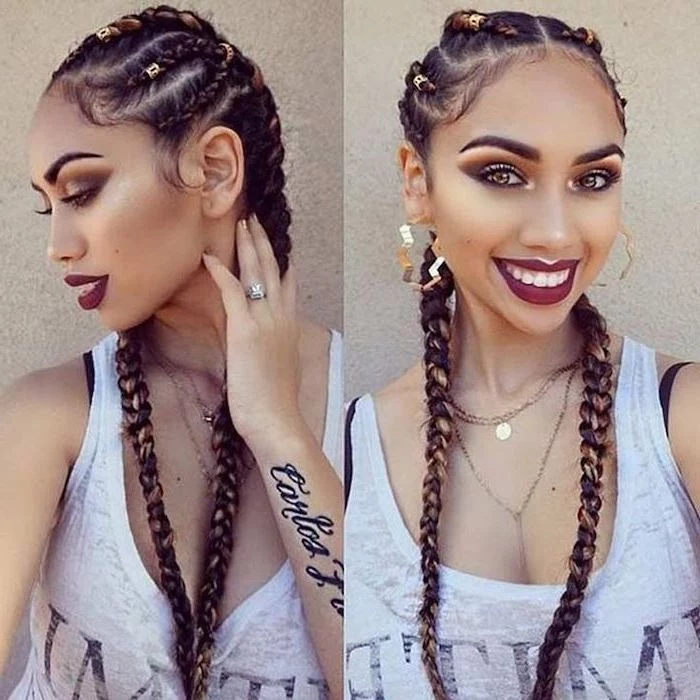
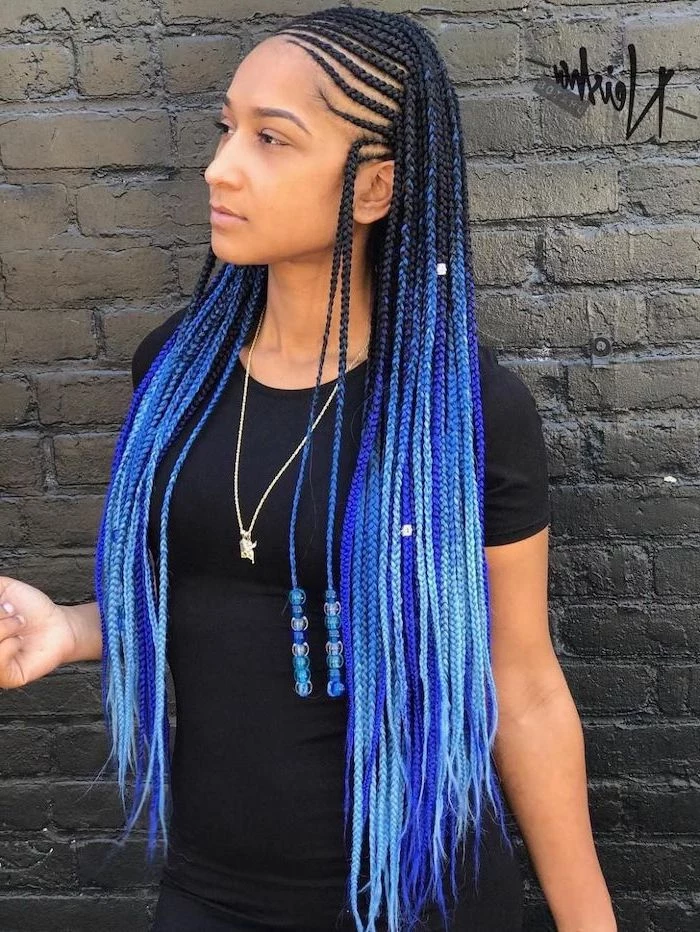
Listen to your scalp: A feeling of tightness for the first day is common, but sharp, persistent pain, headaches, or small white bumps around the base of the braids are not. This is a sign of excessive tension that can lead to follicle damage. Don’t be afraid to speak up during your appointment or call your stylist afterwards.

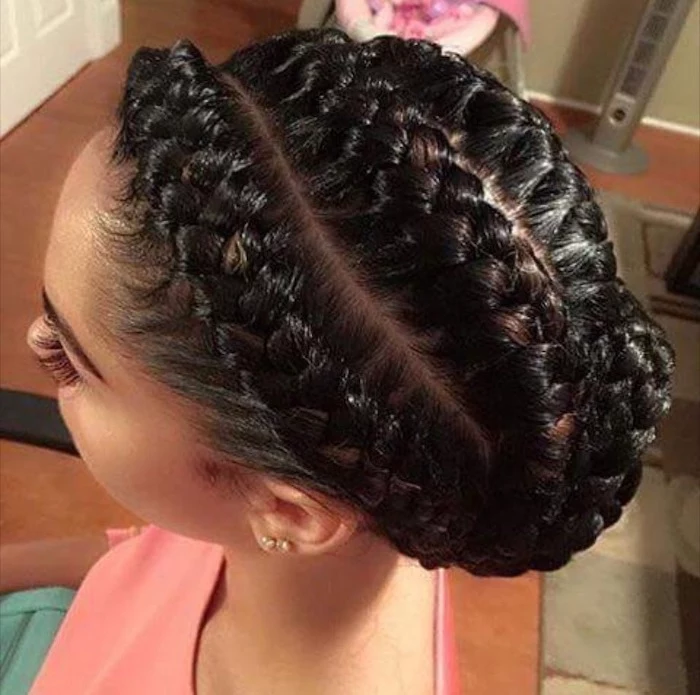
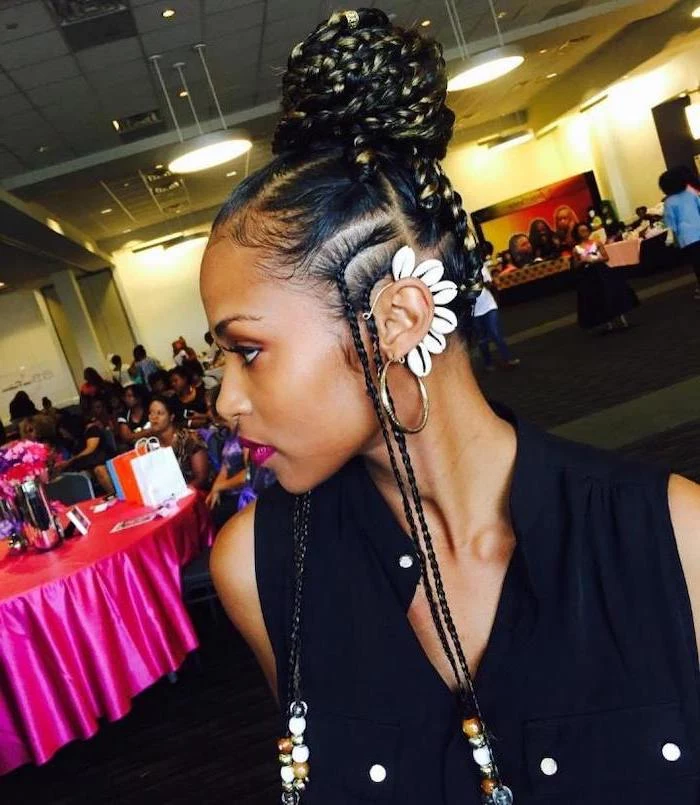
Choosing the right size braid depends on your hair density and lifestyle. Here’s a quick guide:
- Jumbo Braids: A bold, quick-to-install style. Best for those with dense hair that can support the weight. Not ideal for fine hair, as the sections can be too heavy.
- Medium Braids: The most versatile option. They offer a great balance of fullness and longevity without being overly heavy.
- Small Braids: A delicate and long-lasting choice, but the installation time is significantly longer. Ensure your stylist doesn’t make them *too* small, which can add unnecessary tension.

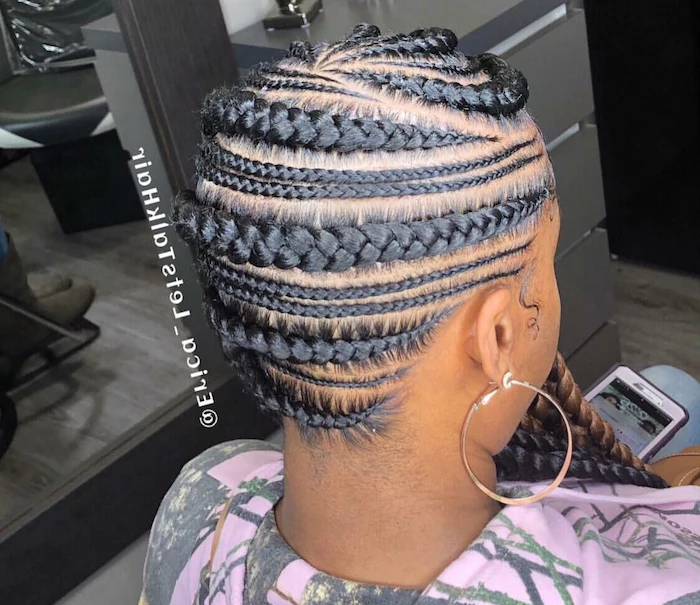
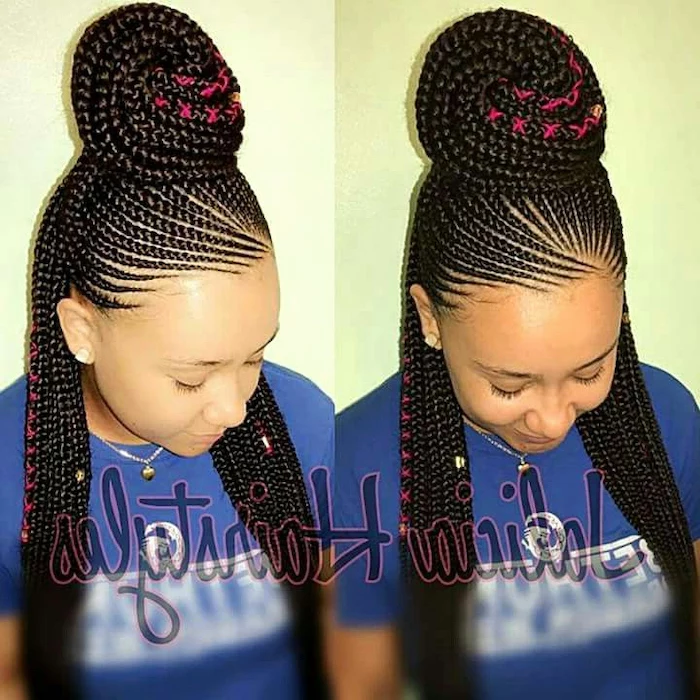
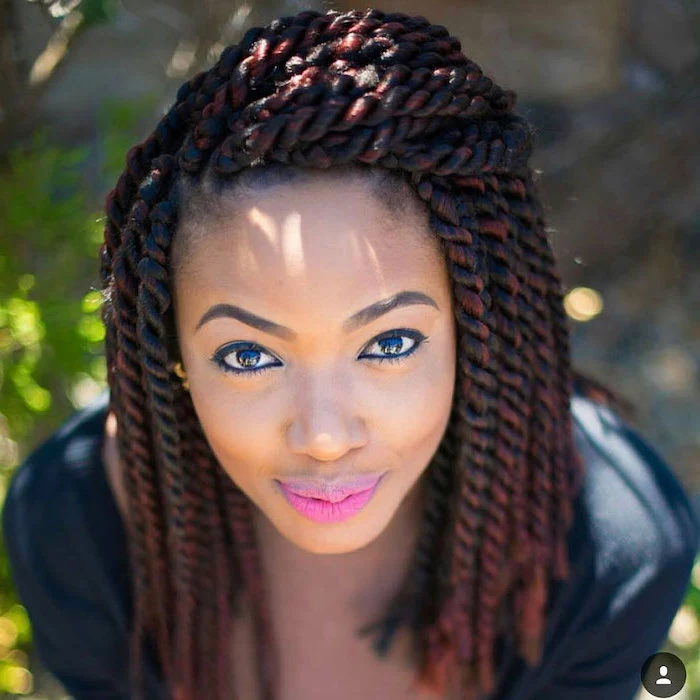
The sensation of newly finished braids is unique—a clean, defined scalp and the satisfying weight of the style. It’s a feeling of being ‘put together’ and ready for anything, a low-maintenance glamour that lasts for weeks. This confidence boost is one of the most cherished parts of the braiding experience.
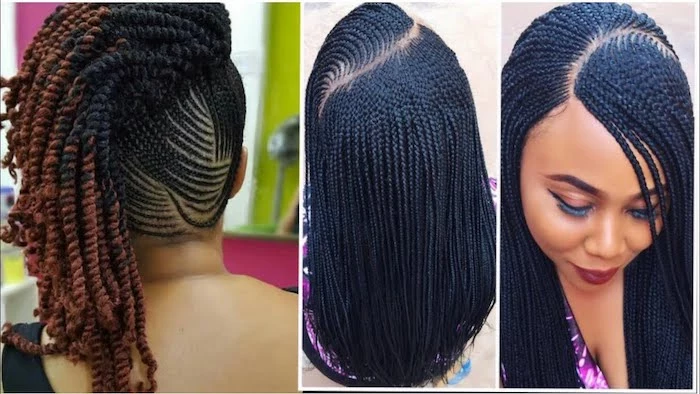
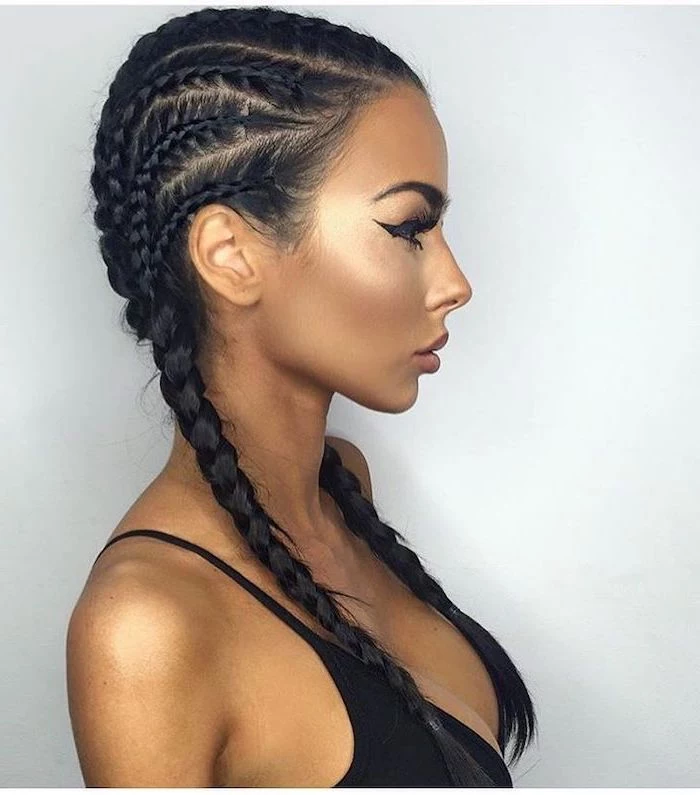
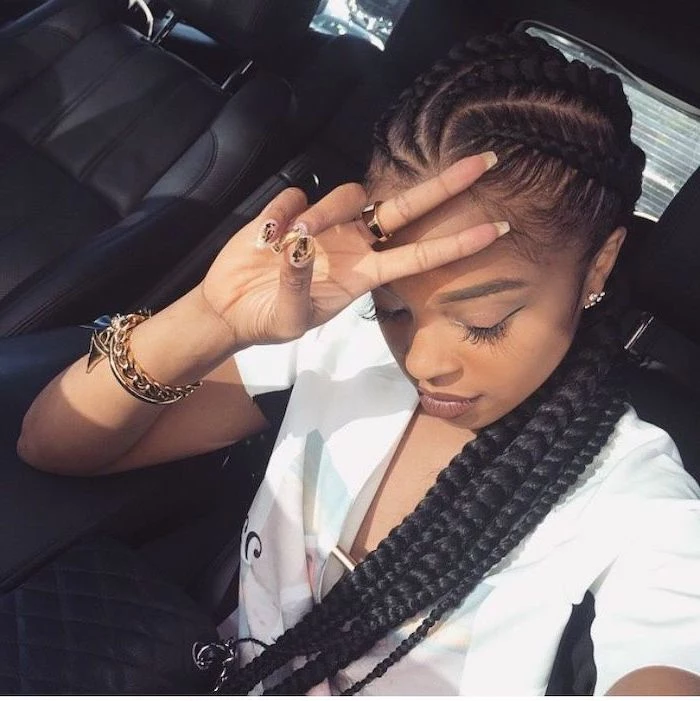
What’s the best way to sleep with Ghana braids?
Protecting your investment overnight is key to longevity. A large silk or satin bonnet is your best friend. It reduces friction that causes frizz and protects your edges. If bonnets aren’t your thing, a silk or satin pillowcase is the next best option to keep your braids looking fresh.
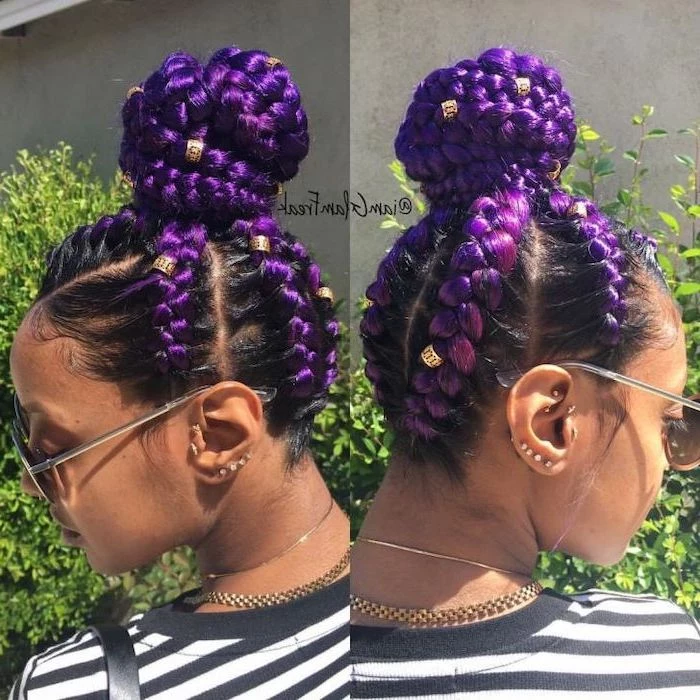
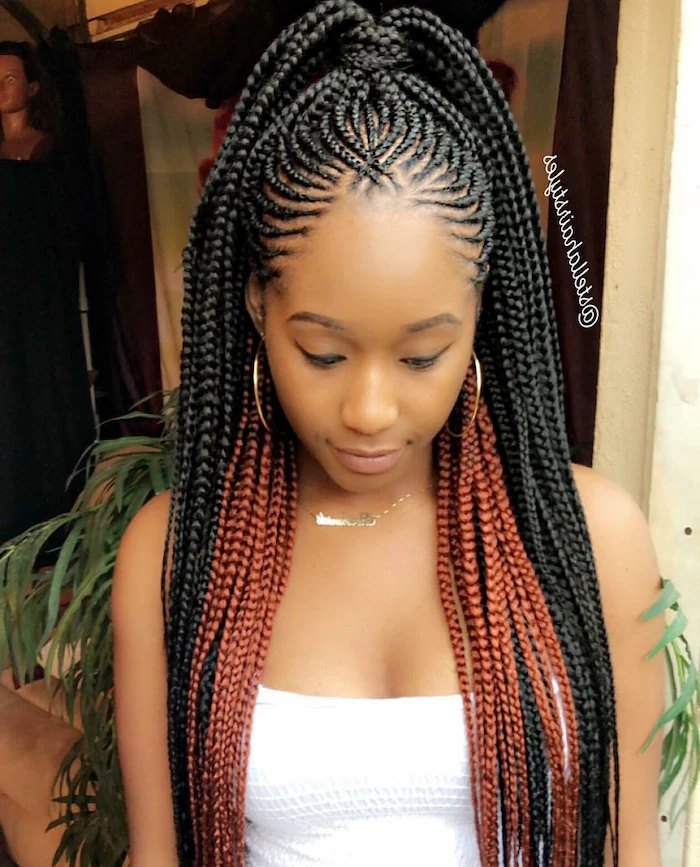
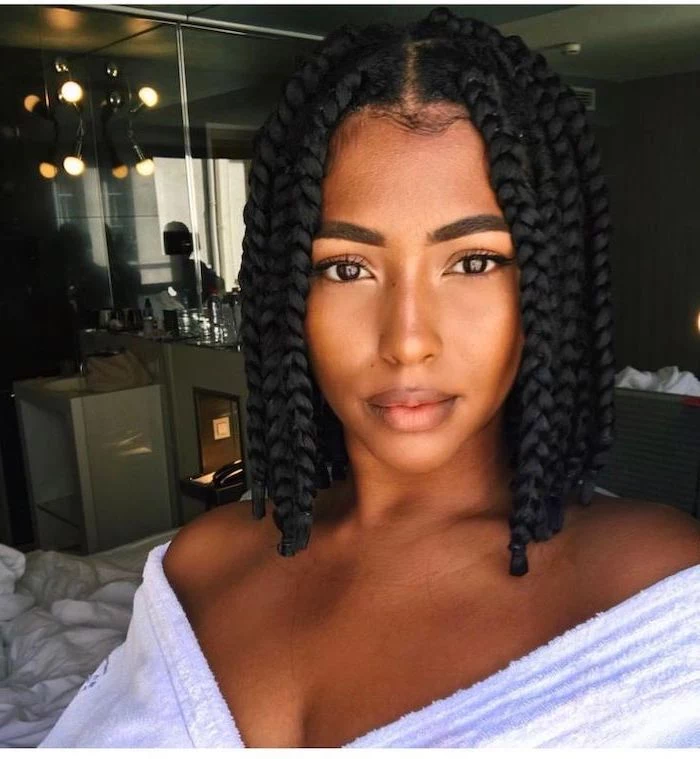
Accessorizing your braids is where you can truly personalize your look. Simple silver or gold cuffs are a classic choice. For a bohemian vibe, consider wooden beads on the ends. Filigree tubes, strings, and even hair rings can be woven in to match your personal style.
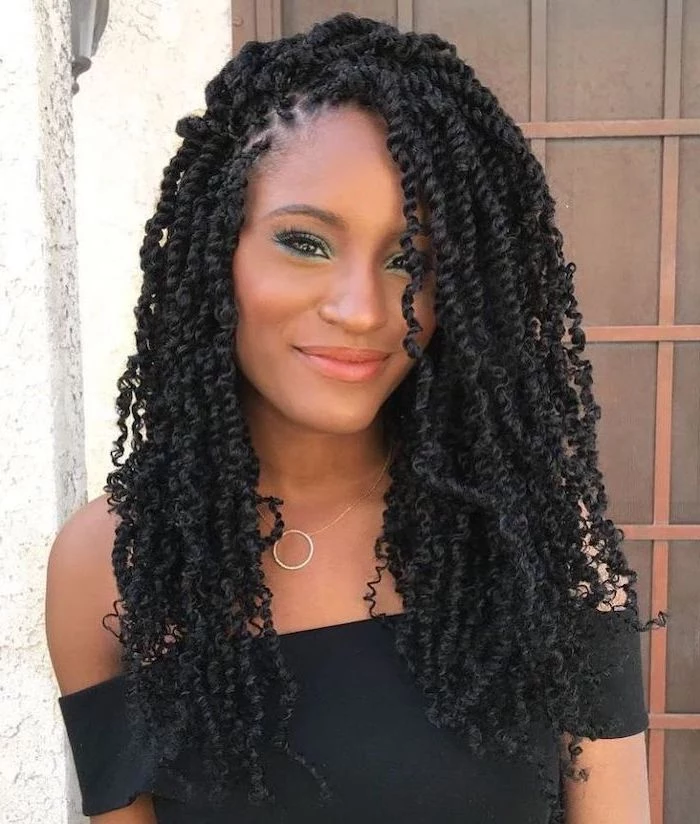
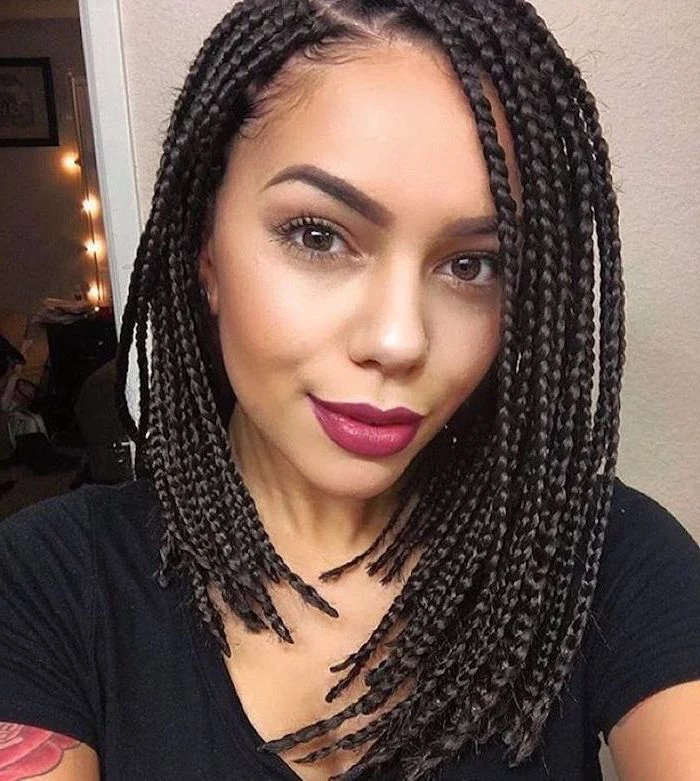
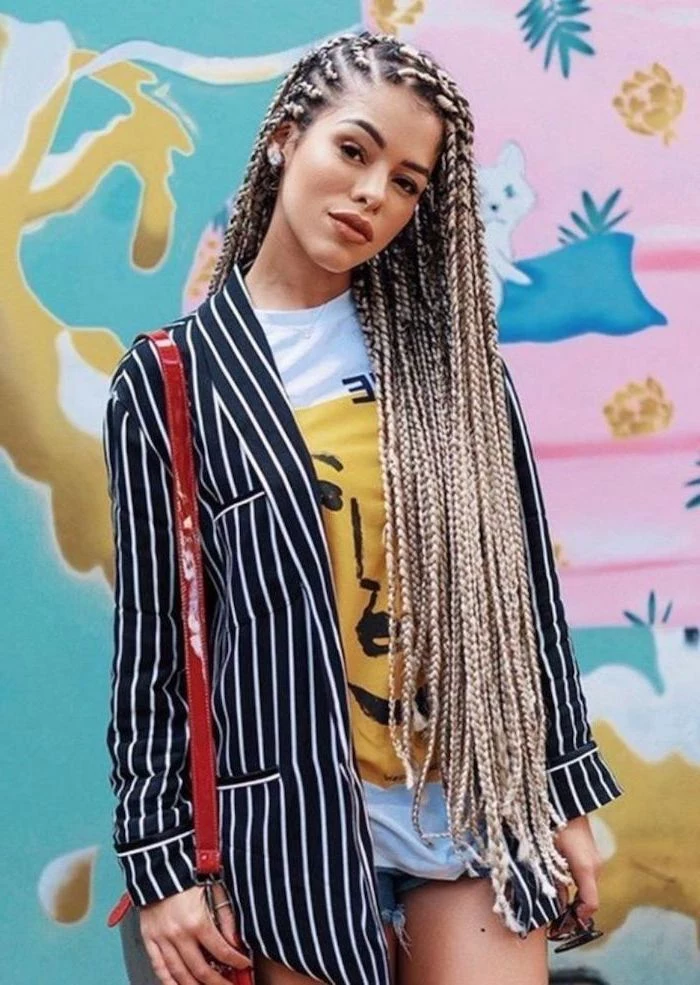
- They listen to your hair history and concerns.
- Their own hair (if visible) or their portfolio shows healthy practices.
- They don’t pull excessively hard; they rely on technique for neatness.
- They can advise on the best size and style for your hair type.
- The salon is clean and professional.
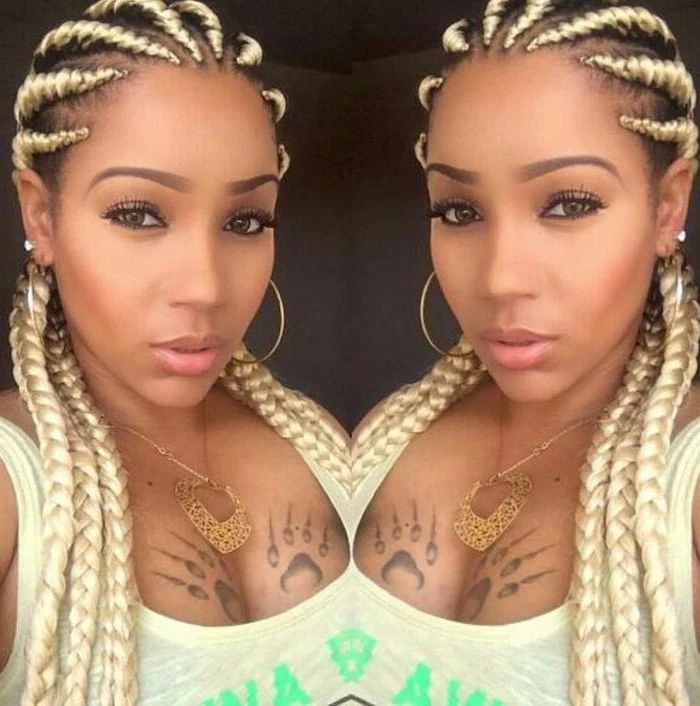
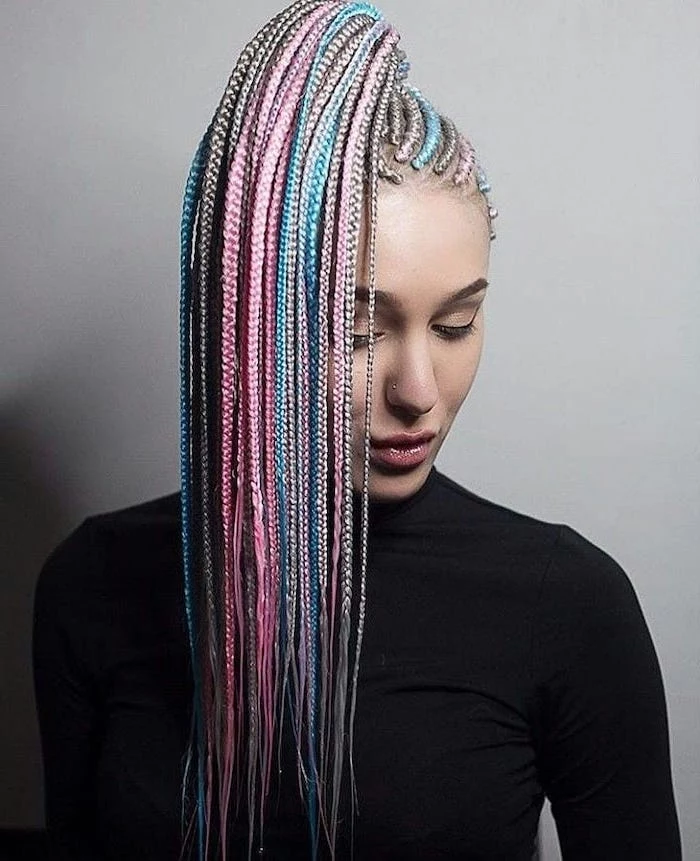
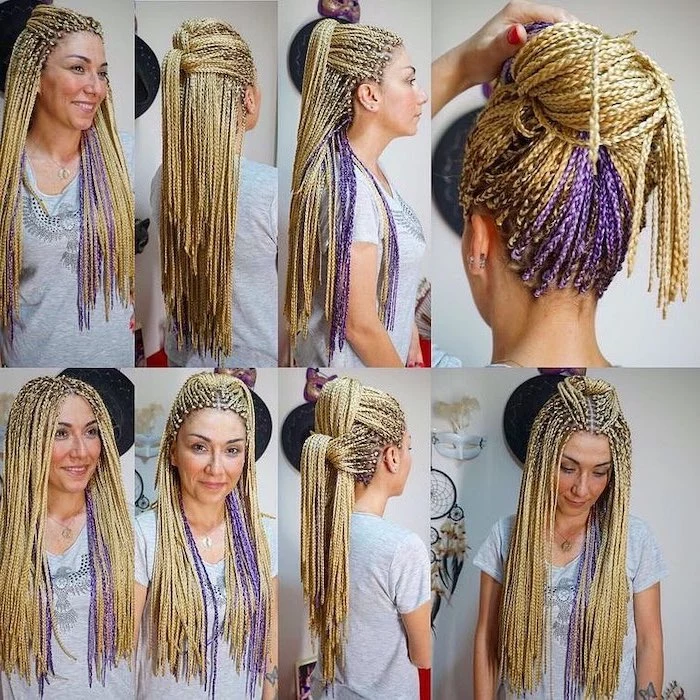
Braid & Scalp Spray: Designed to add moisture and sheen to synthetic hair and soothe the scalp. Brands like African Pride or Jamaican Mango & Lime make excellent options. They are often oil-based and great for relieving itchiness.
Styling Mousse: A foam-based product, like The Doux Mousse Def or Nairobi Wrapp-It Shine Foaming Lotion, is perfect for taming frizz and flyaways. Apply a small amount and tie down with a satin scarf for 15-20 minutes for a ‘fresh-from-the-salon’ look.
Use them together: spray for scalp health, mousse for style refresh.
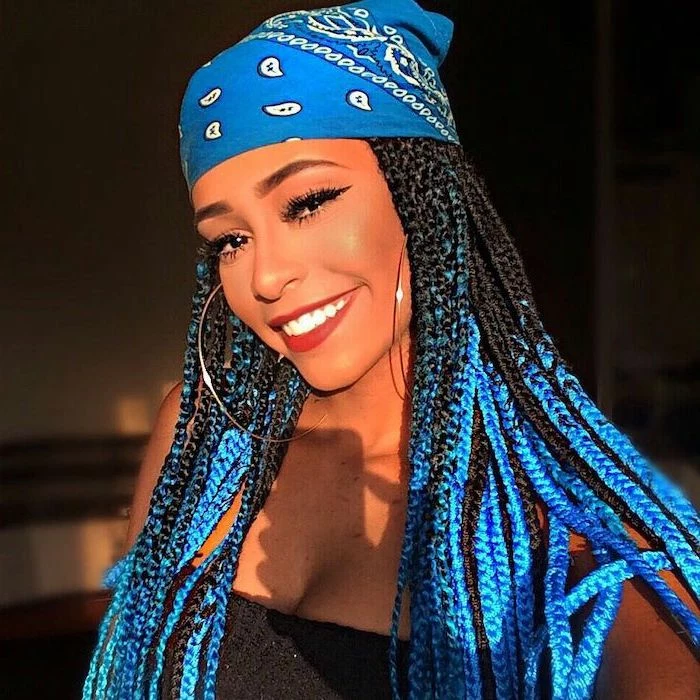
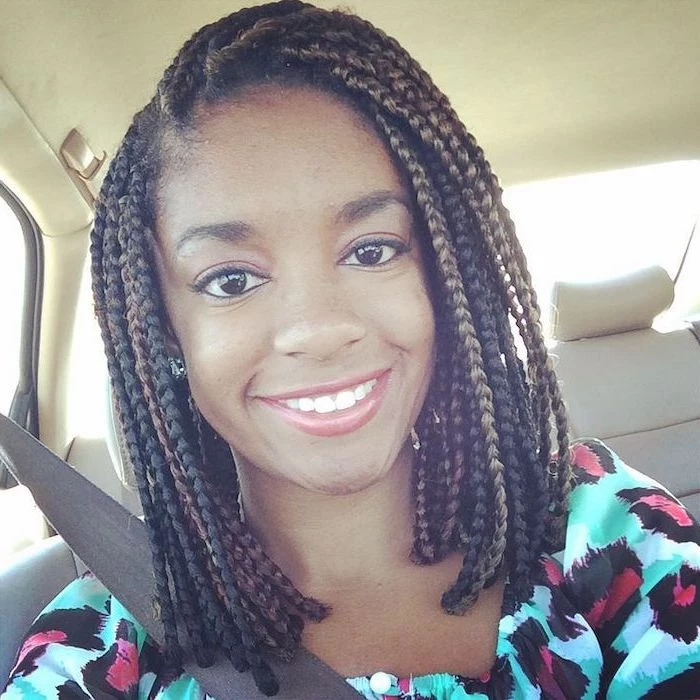
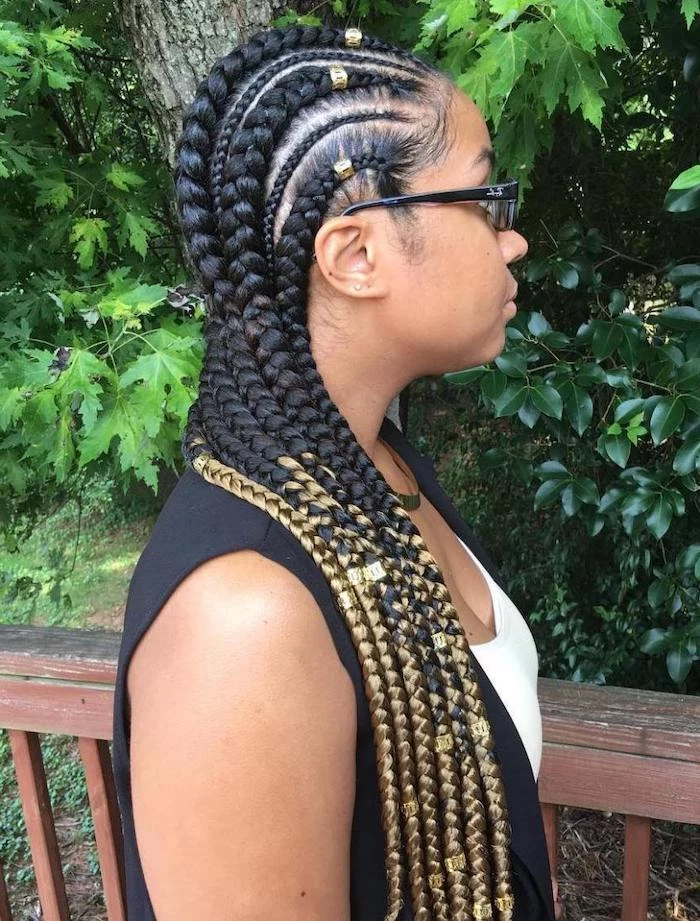
A touch of color can transform your braids. Instead of a full head of a bold shade, try a ‘peekaboo’ style where a few braids underneath are a different color. Another popular trend is ombré, using extension hair that transitions from a natural color at the root to a brighter one at the ends.
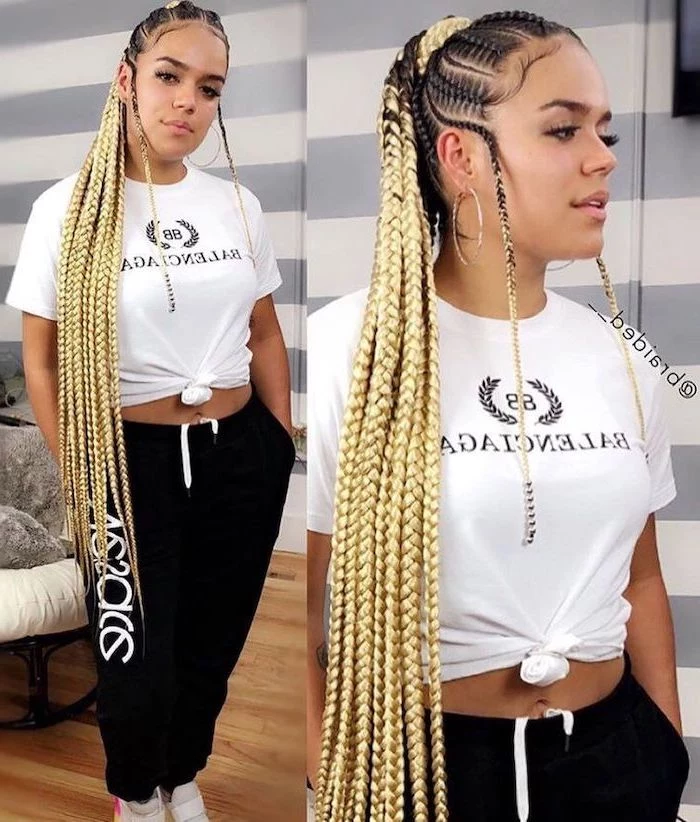
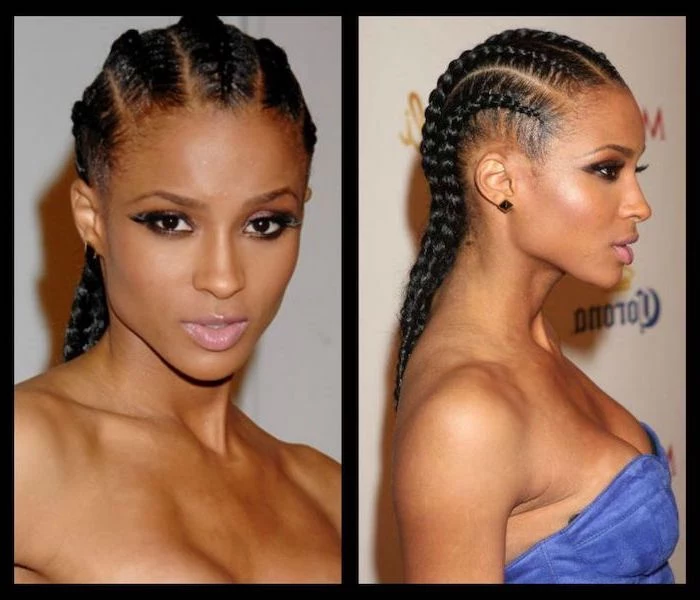
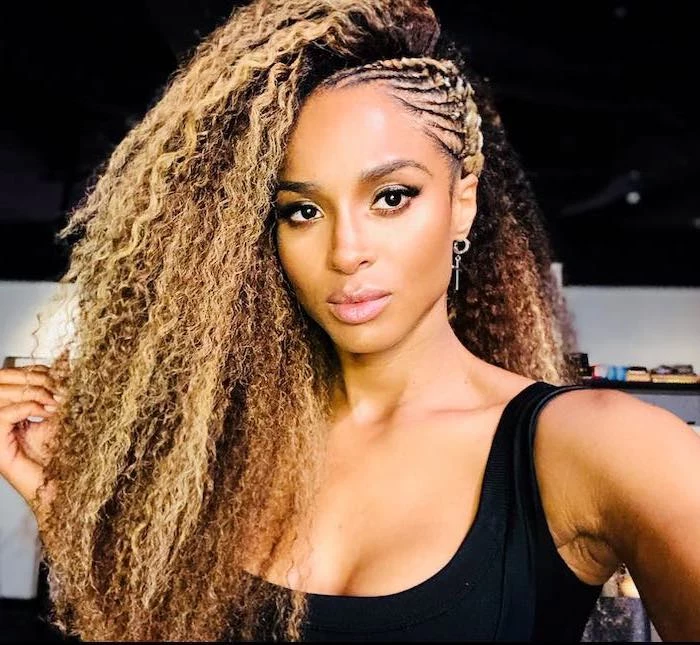
Did you know that the term ‘cornrows’ originates from the appearance of rows of corn in a field, which the straight-back braiding style resembles? The style itself has roots dating back thousands of years in Africa.
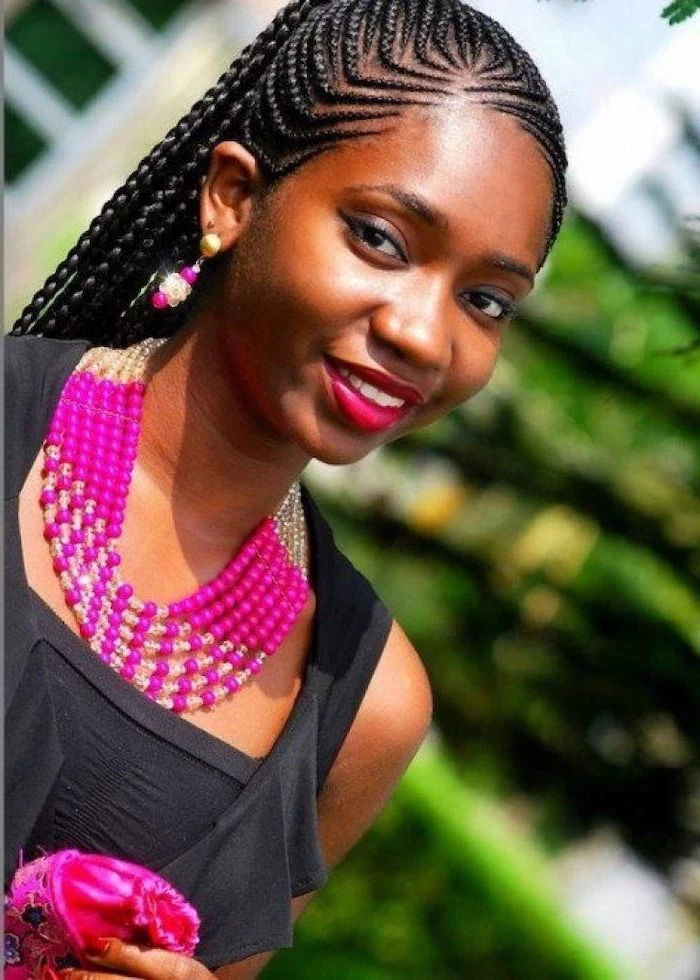
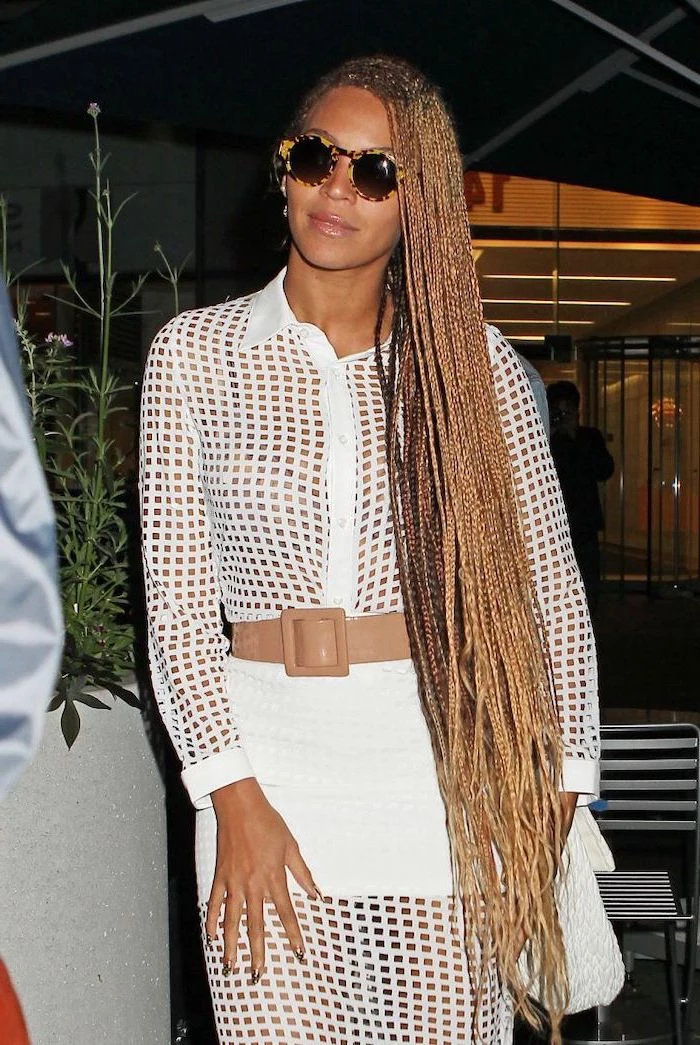
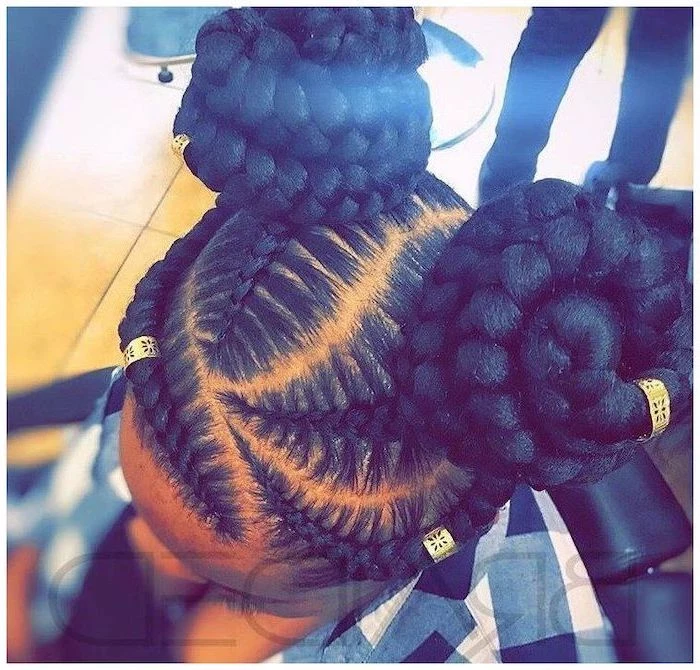
The itch is real, but scratching with your nails is a major ‘don’t.’ It can disrupt the braid, cause frizz, and lead to scalp irritation or breakage. Instead, gently tap the itchy spot. For persistent itch, use a nozzle-tip applicator to apply a soothing oil like tea tree or peppermint oil directly to the scalp.
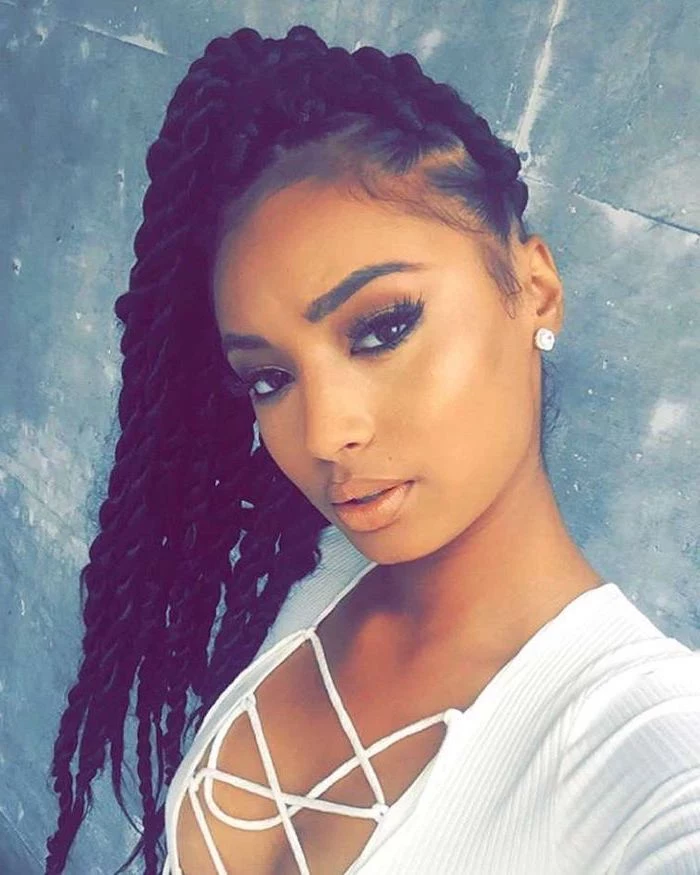
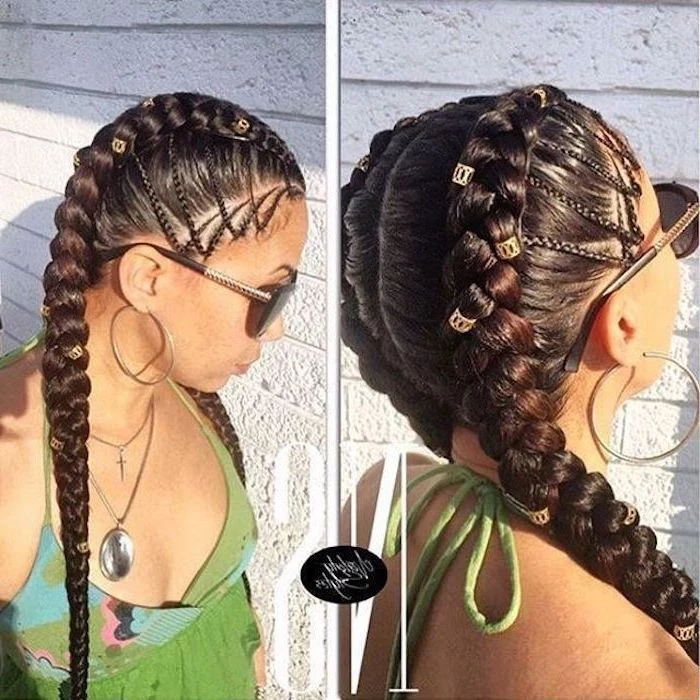

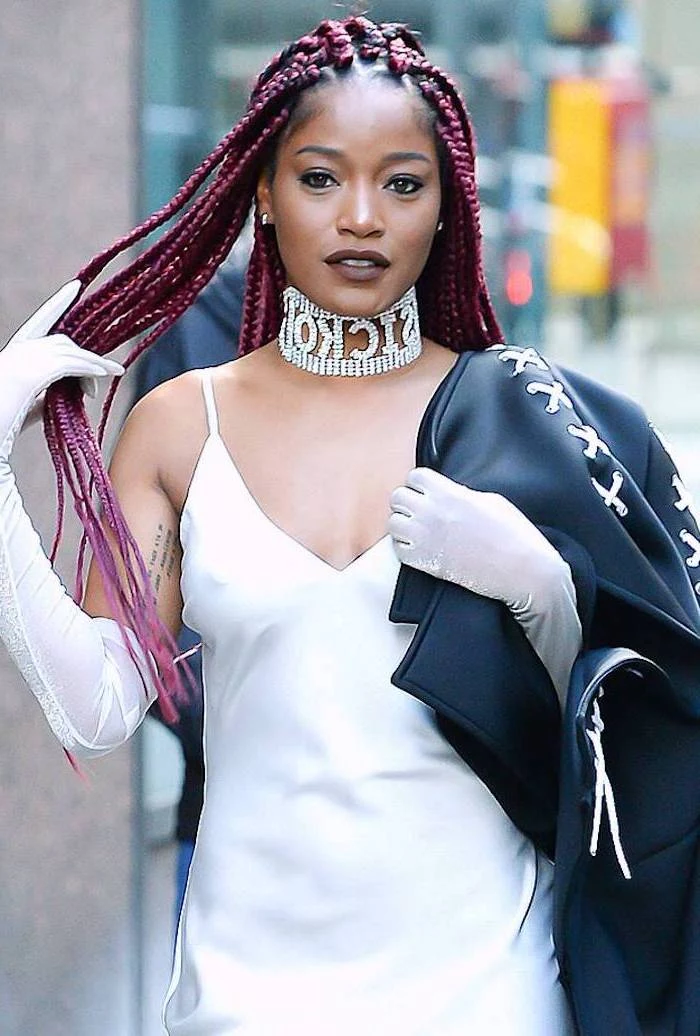
The 4-Week Rule: While Ghana braids can look good for longer, most trichologists and expert stylists recommend keeping them in for a maximum of 4 to 6 weeks. After this period, the new growth can begin to put stress on the braided hair, and product buildup on the scalp can become problematic for hair health.
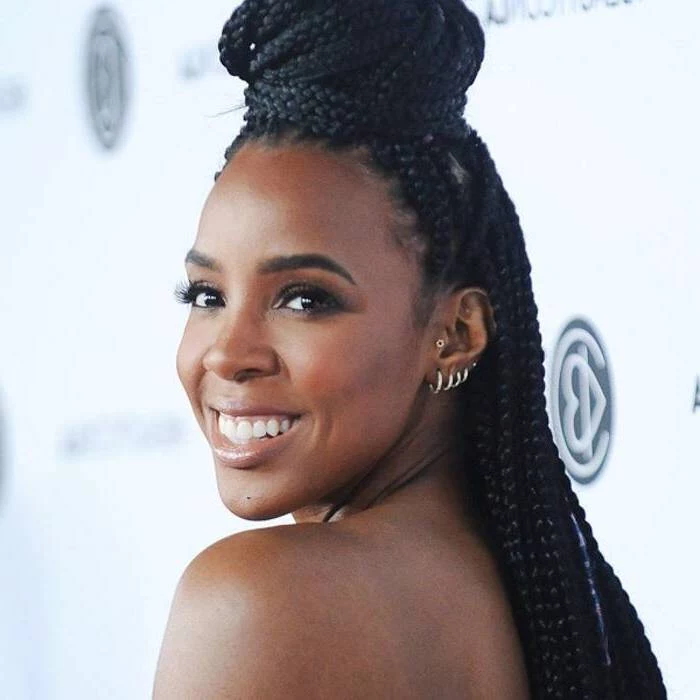
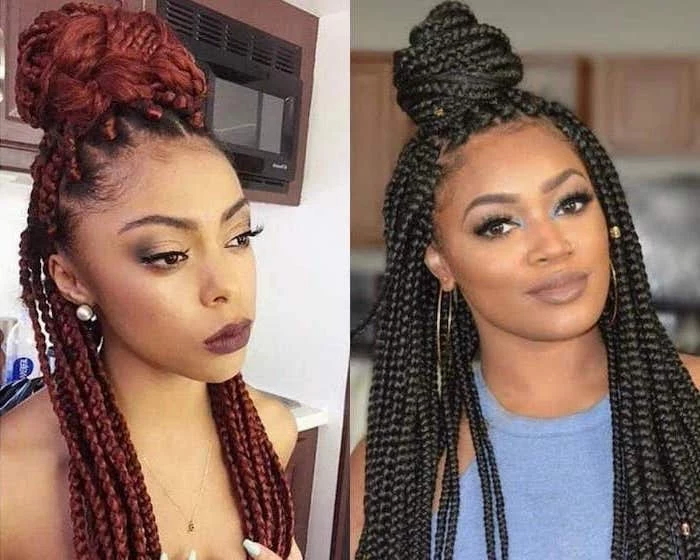
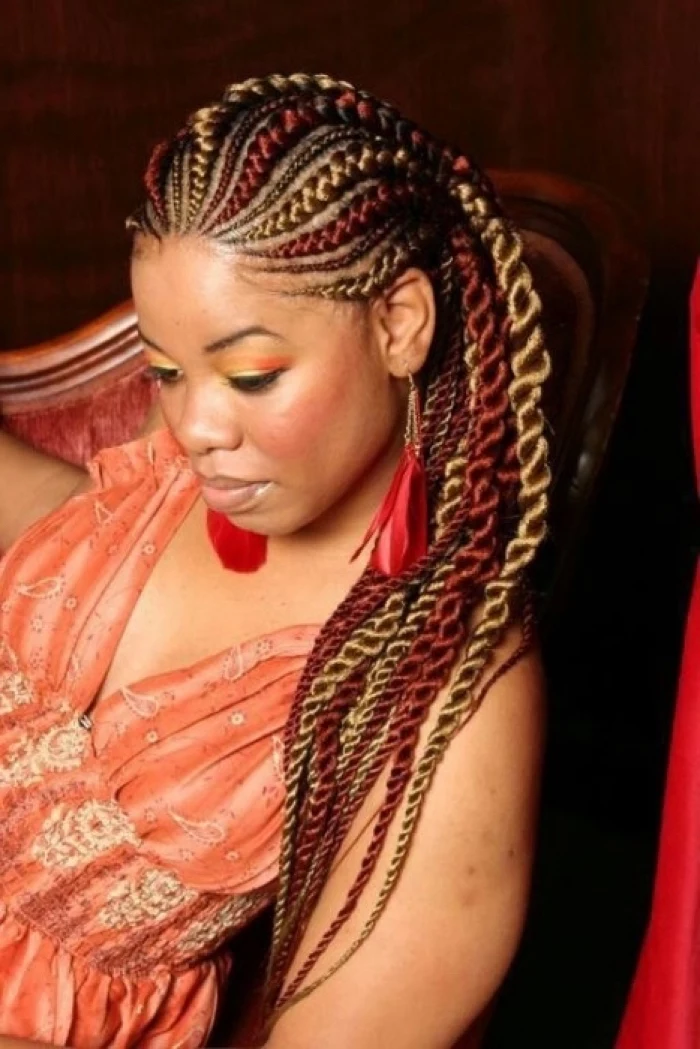
- Your scalp feels clean and can breathe.
- Your edges are preserved from tension.
- You prevent your own hair from matting with the new growth.
The key is a proper takedown. Be patient, use a leave-in conditioner or oil to add slip, and gently detangle each section as you unbraid it, starting from the bottom up.
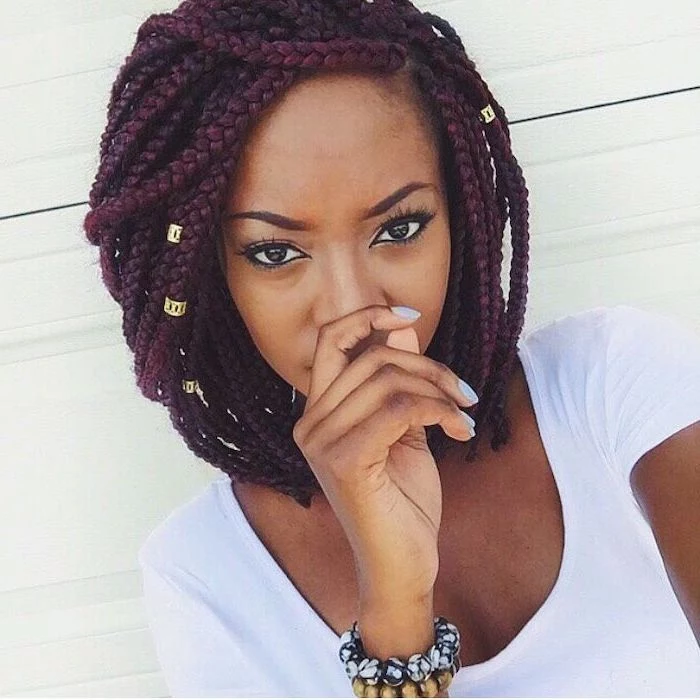
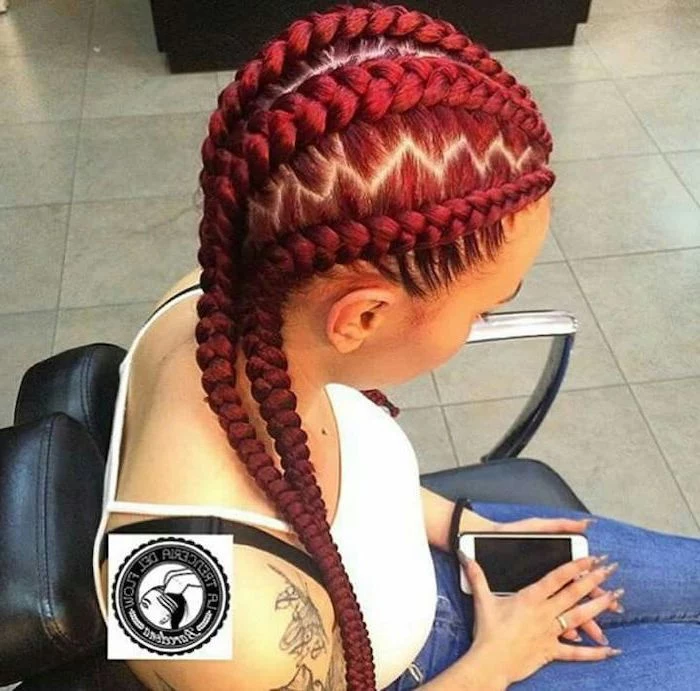
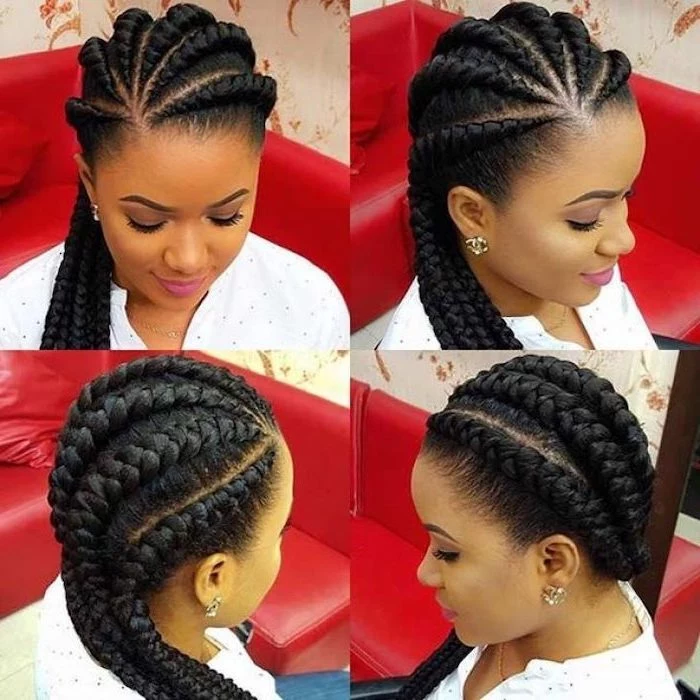
For children, comfort is paramount. Opt for fewer, larger braids to shorten sitting time and reduce overall weight. Ask the stylist to be extra gentle, especially around the hairline. It’s better for the braids to be slightly less taut and not last quite as long than to cause the child discomfort or damage their developing follicles.
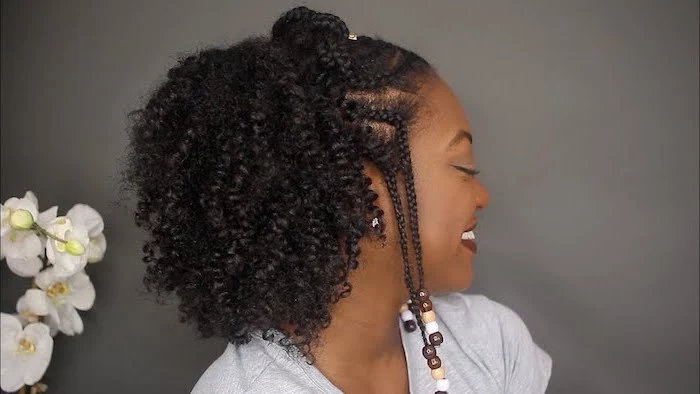
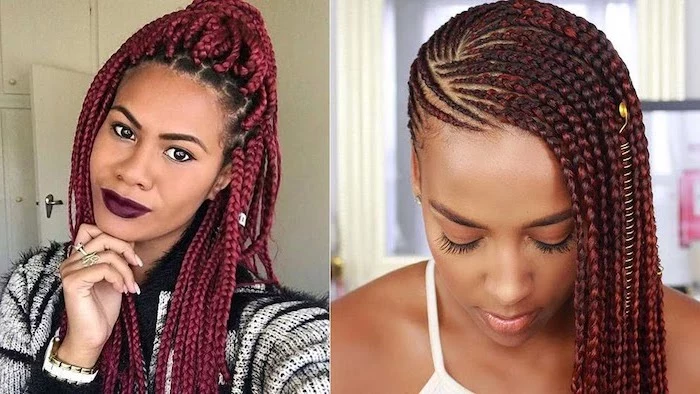
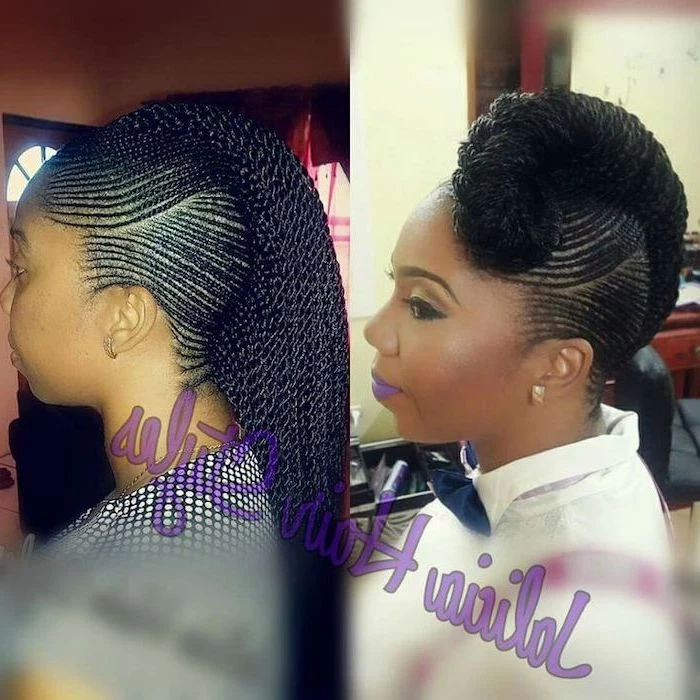
What about washing my braids?
Yes, you should! A full soak isn’t necessary. Dilute a sulfate-free shampoo with water in an applicator bottle and apply it directly to the scalp. Gently massage with the pads of your fingers (not nails!), then rinse thoroughly by letting water run down the length of the braids. Focus on cleansing the scalp, not the extension hair. Do this every 2-3 weeks.
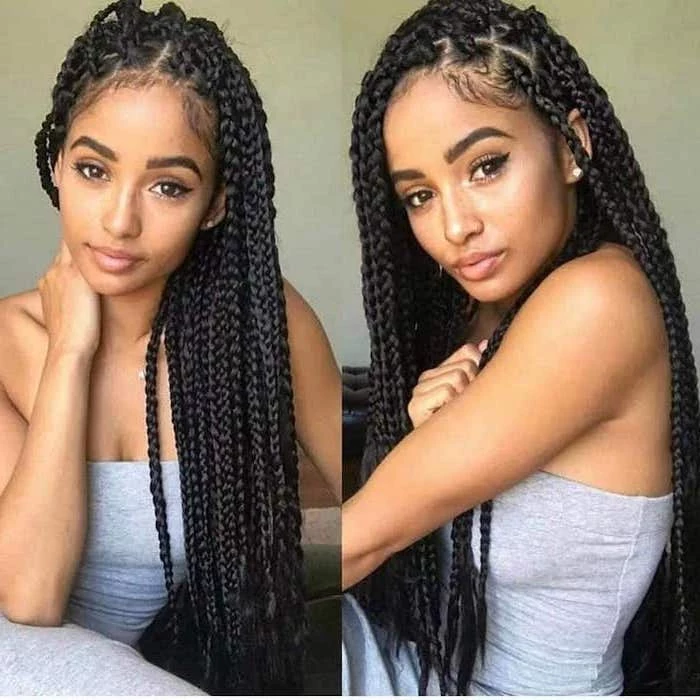
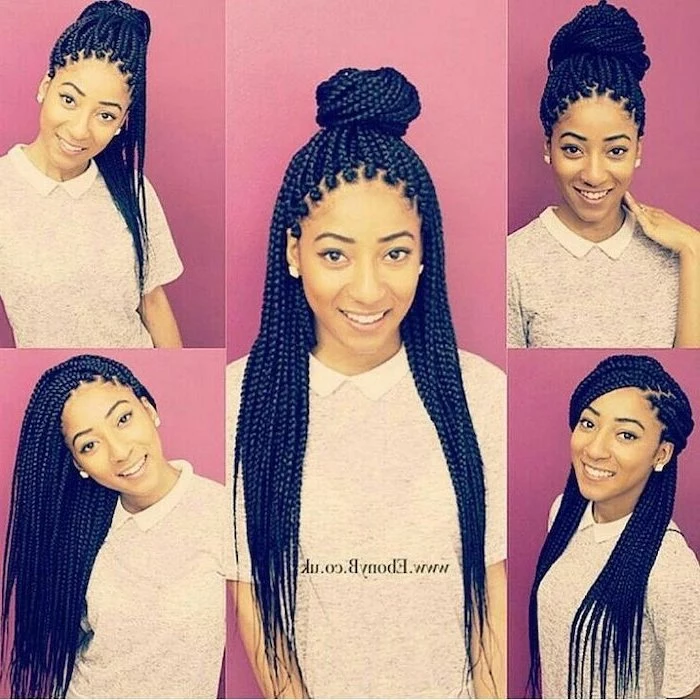
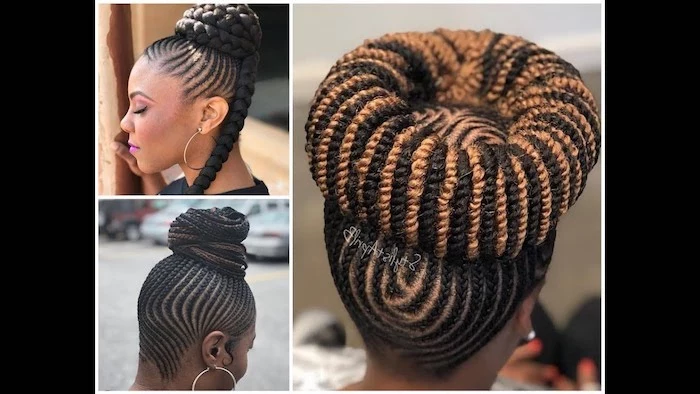
The Take-Down Kit: Don’t just start pulling! Prepare for a smooth removal process. You’ll need a rat-tail comb for gently undoing knots, scissors to snip the ends (well below where your natural hair ends!), plenty of leave-in conditioner for slip, and clips to section the hair as you go.
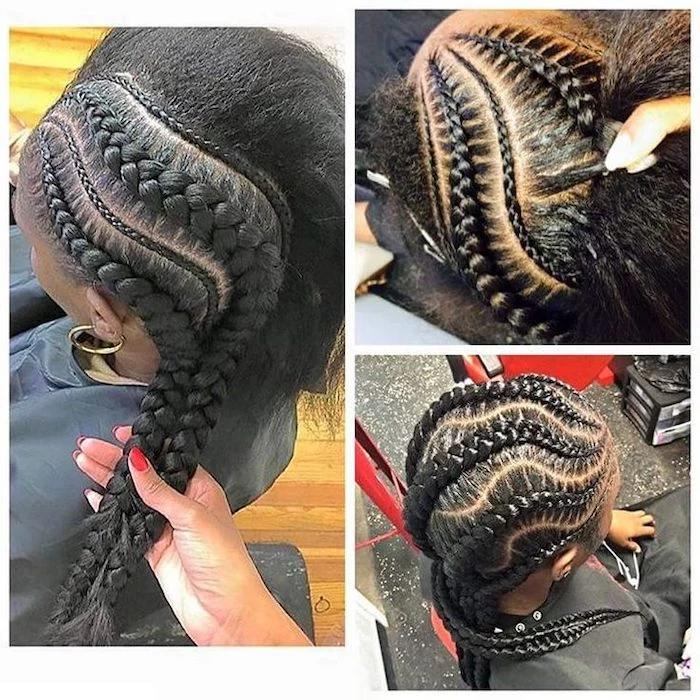
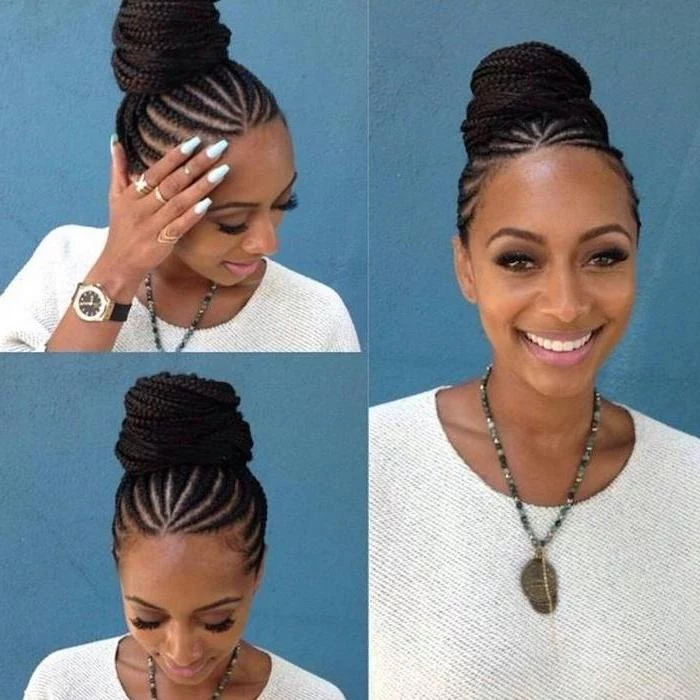
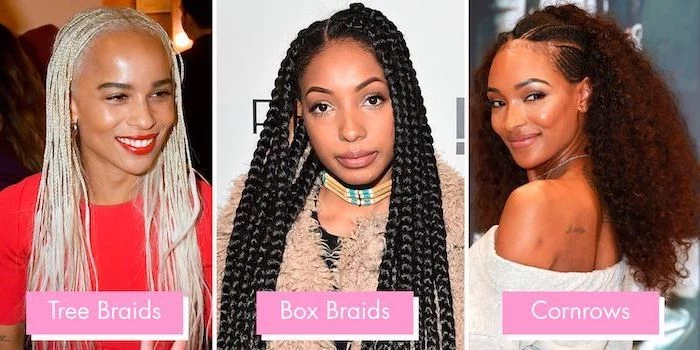
A standard pack of X-Pression braiding hair weighs about 165 grams. A full head of long, medium-sized braids can use 4-6 packs, adding over a kilogram (2.2 lbs) of weight to your head and neck.
This is why balancing the desired look with what’s physically comfortable is so important. If you’re new to extensions, maybe start with a shorter or less dense style to get accustomed to the feeling.
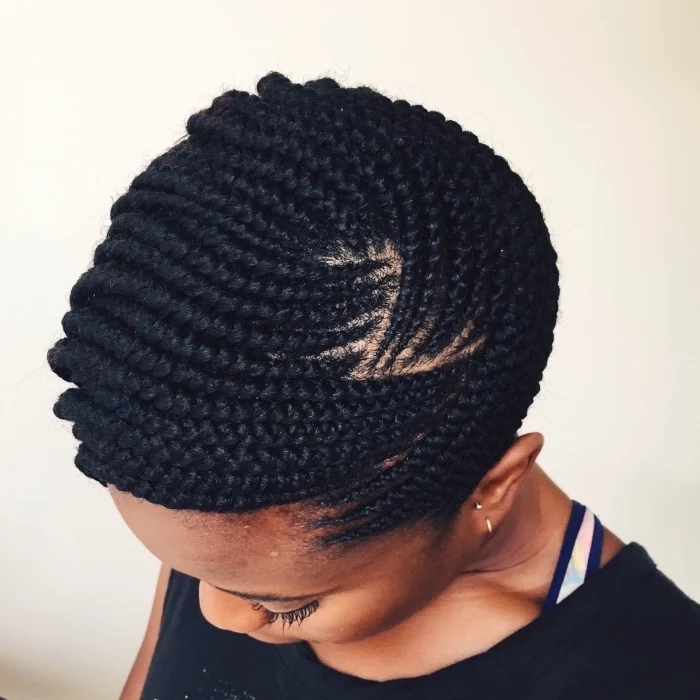
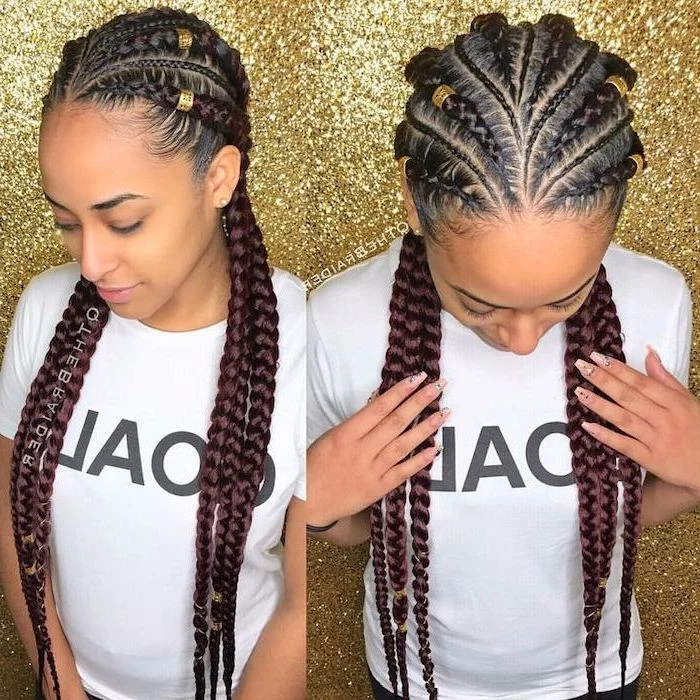
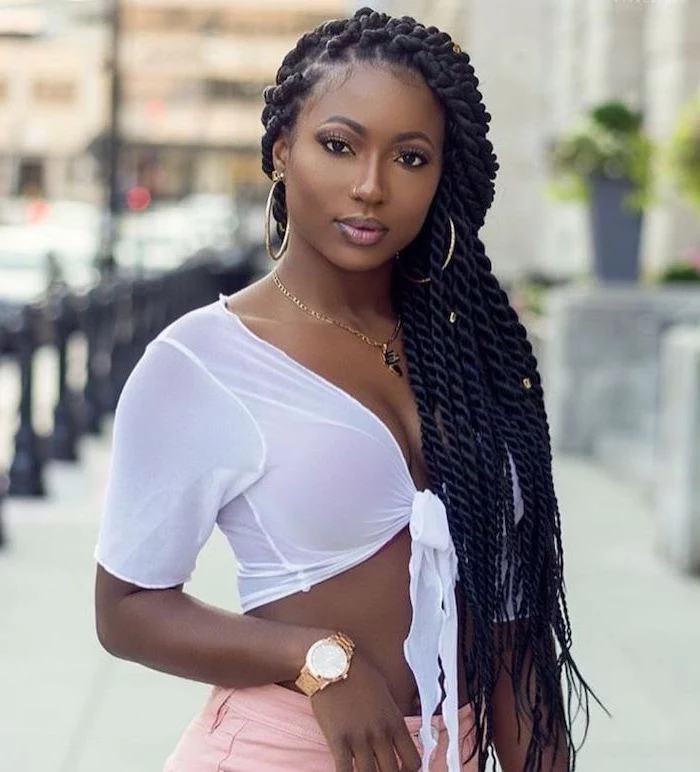
Post-Braid TLC is non-negotiable. After taking your braids out, your hair has been under tension and protected for weeks. Before you do anything else, treat it to a clarifying wash to remove all buildup, followed by a rich, protein-free deep conditioning treatment or hot oil treatment to restore elasticity and moisture. Let your hair rest for at least a week before installing another protective style.
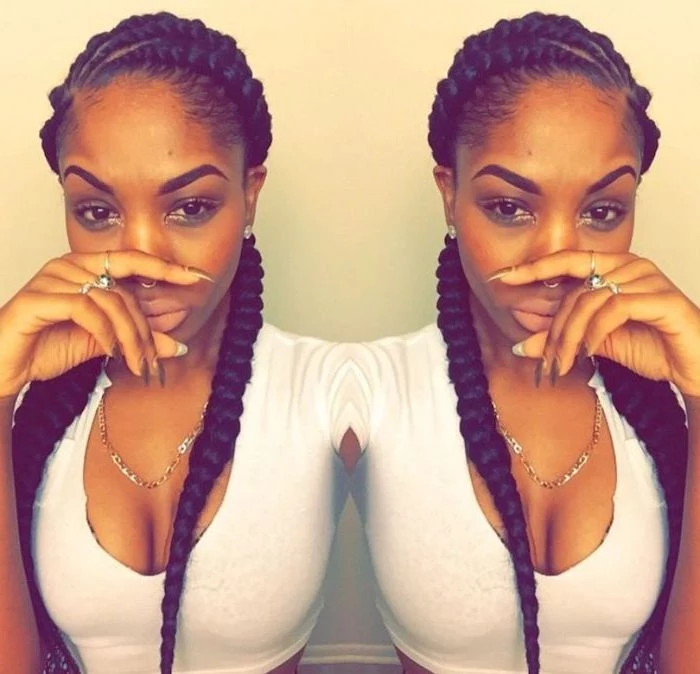
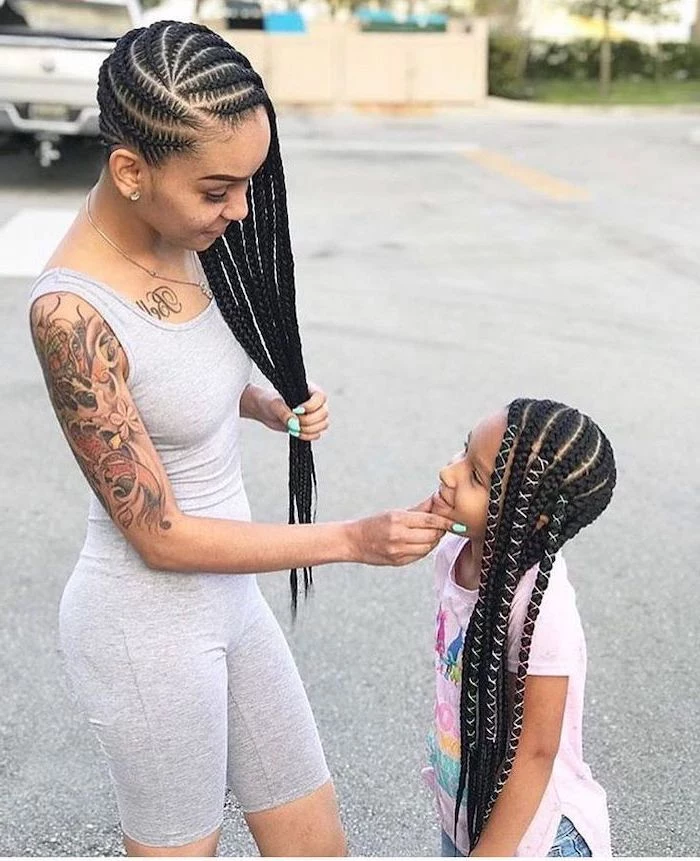
Don’t neglect your edges while your braids are in. These fine, delicate hairs are the most susceptible to traction damage. Each night, gently apply a small amount of a nourishing product like castor oil or a dedicated edge control cream like that from the brand Mielle Organics, and tie it all down with a satin scarf to lay them flat and protect them.










